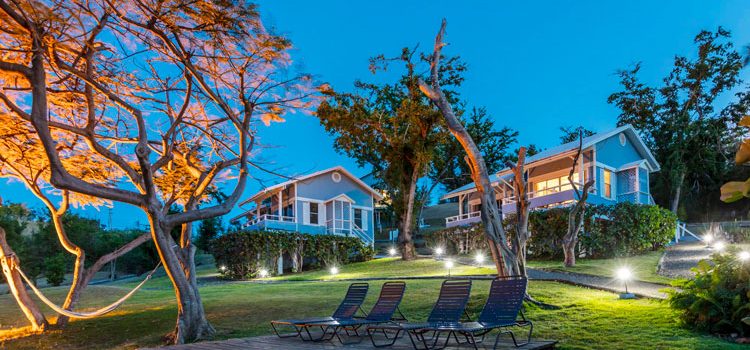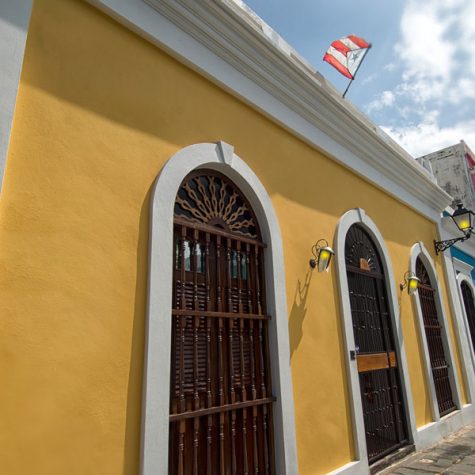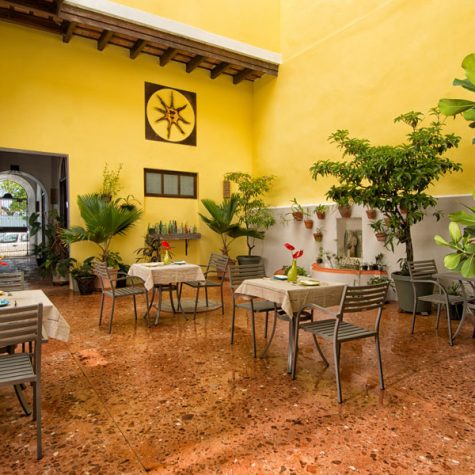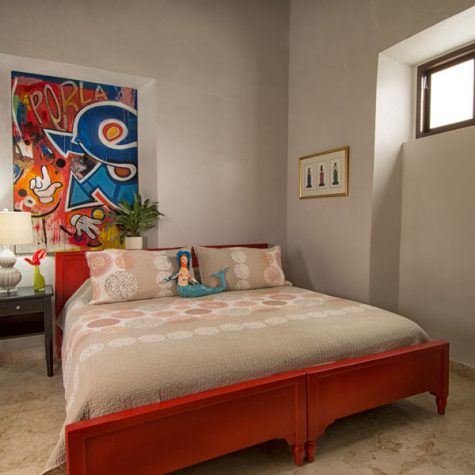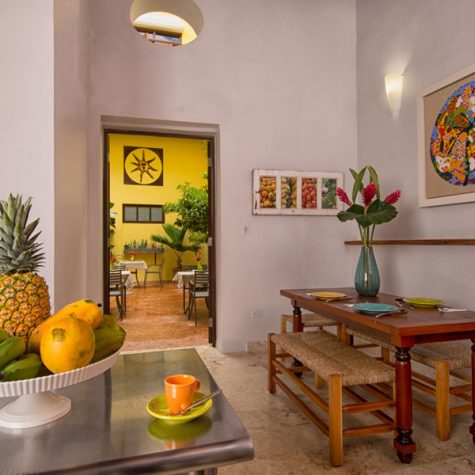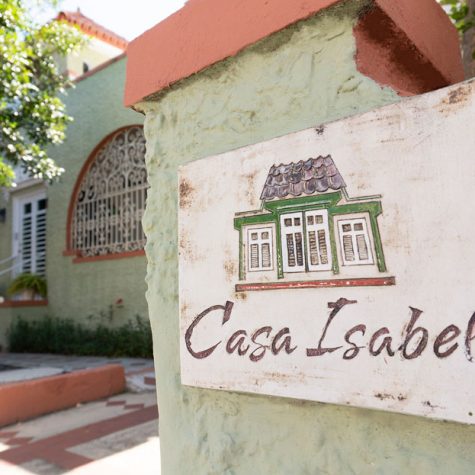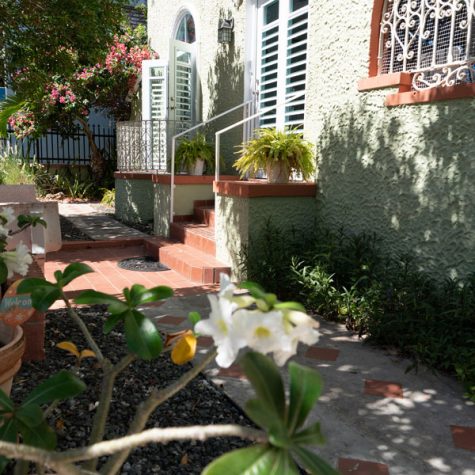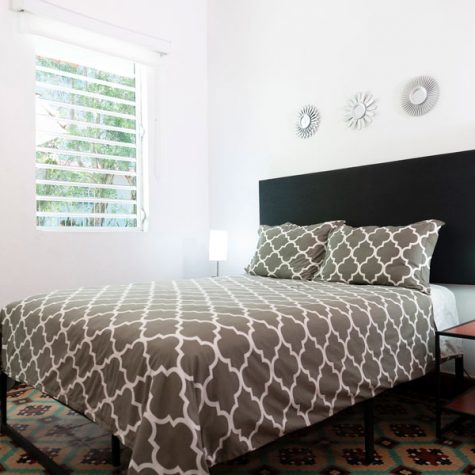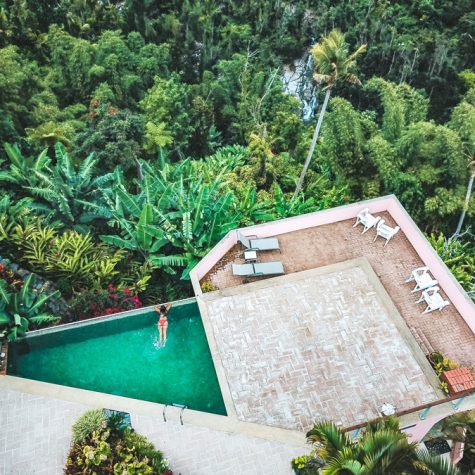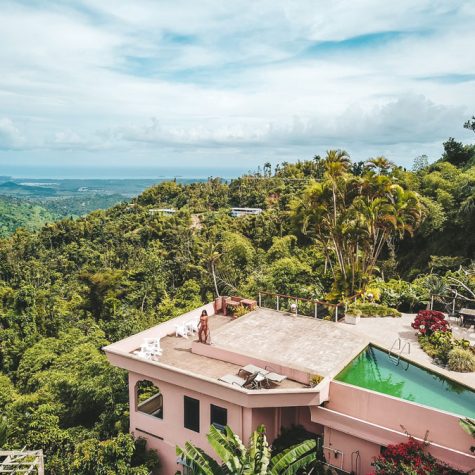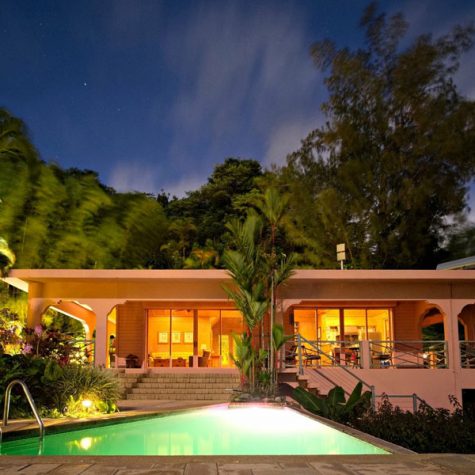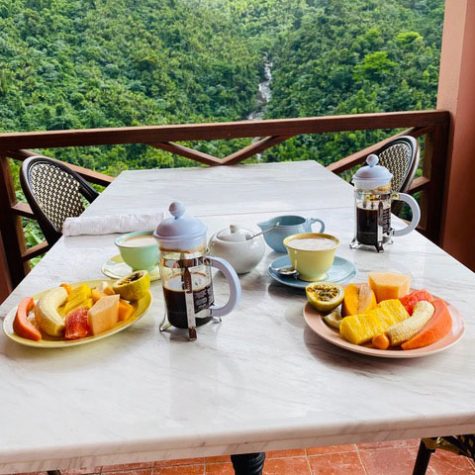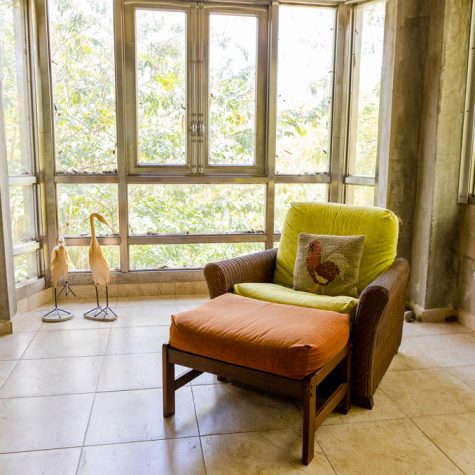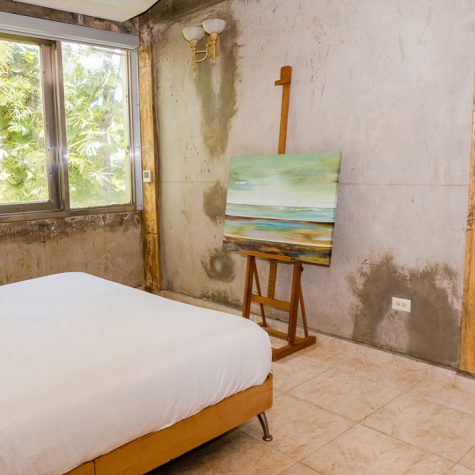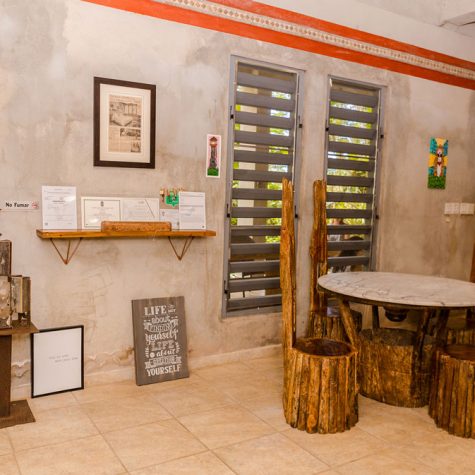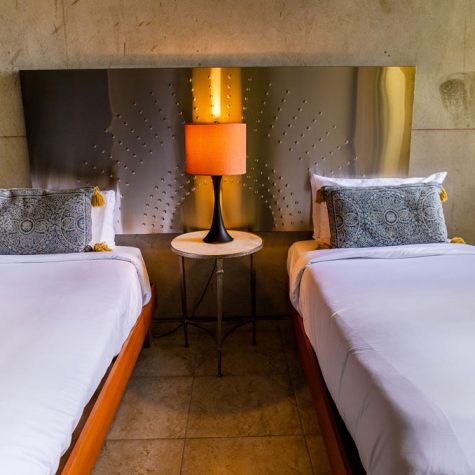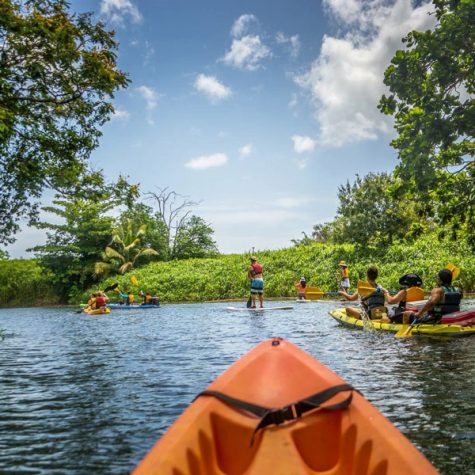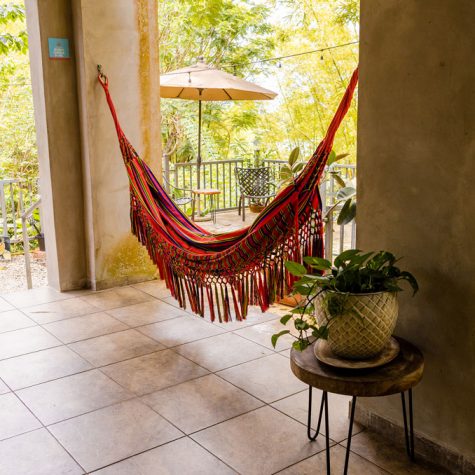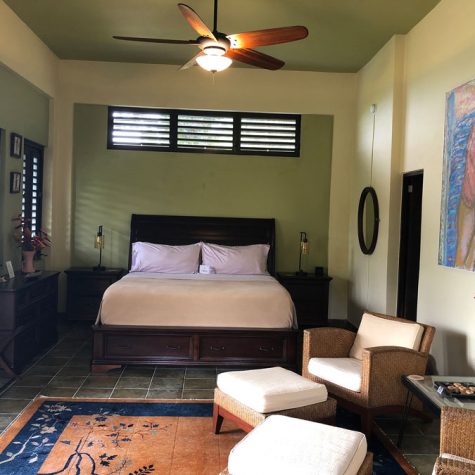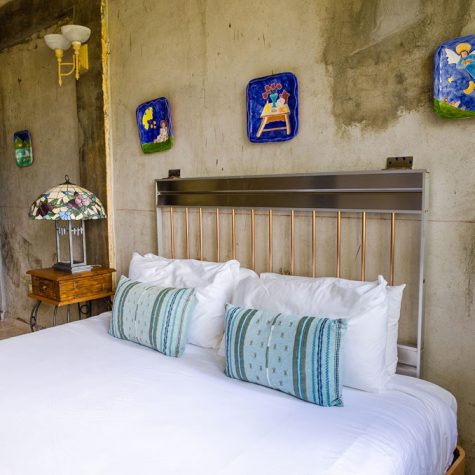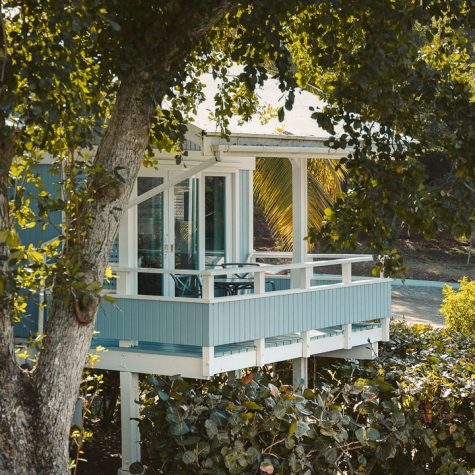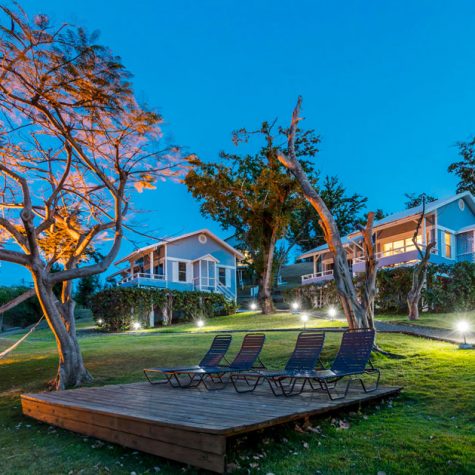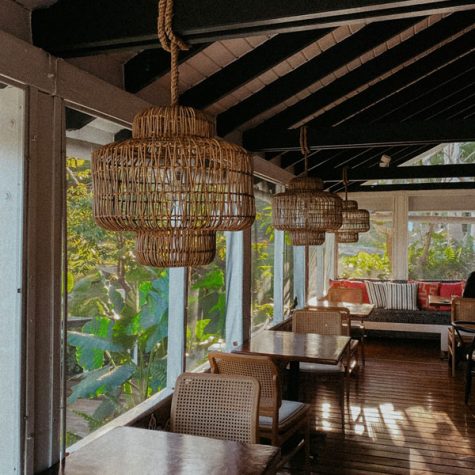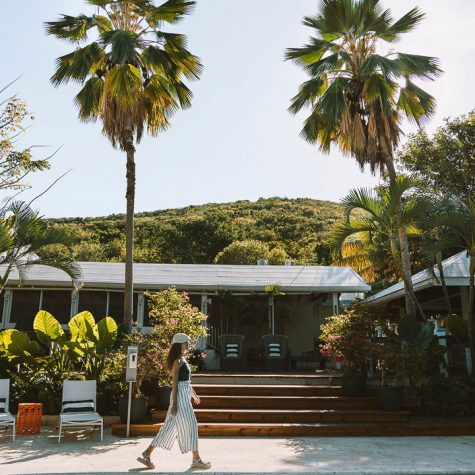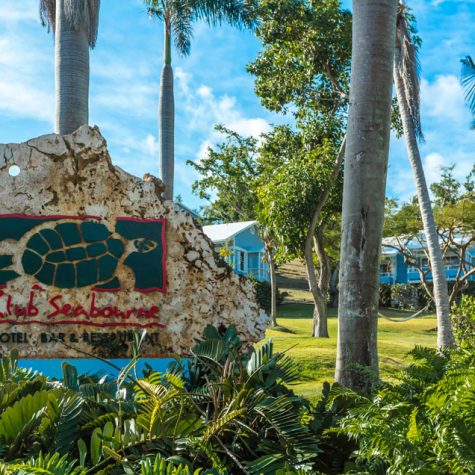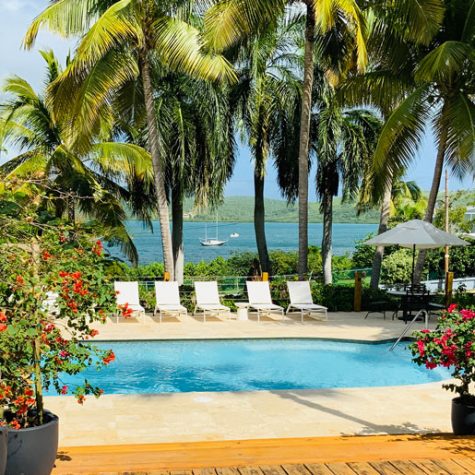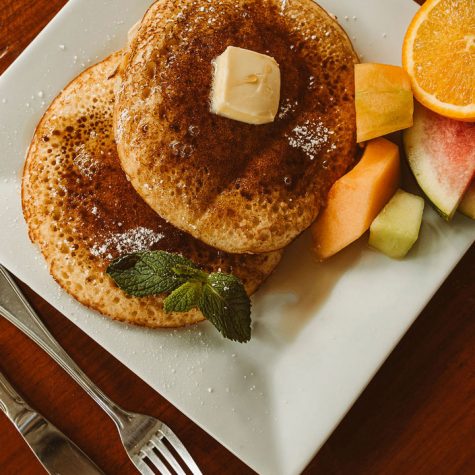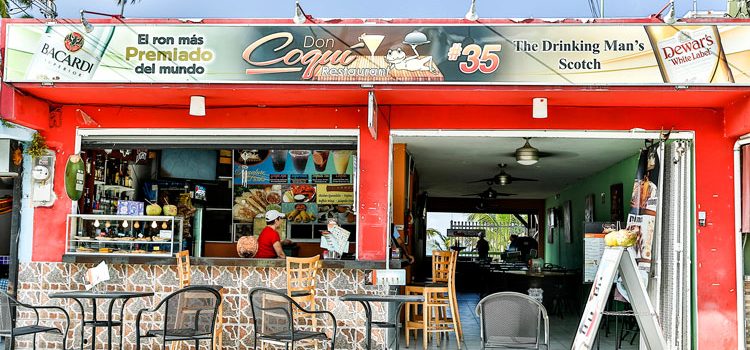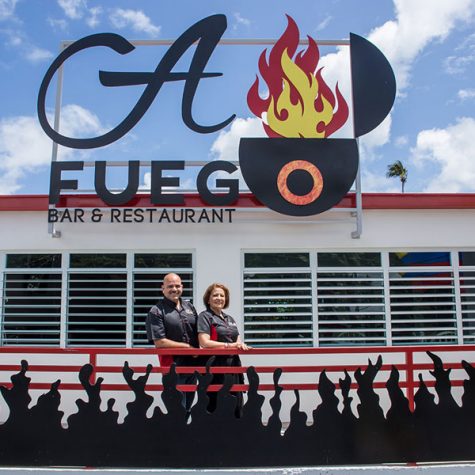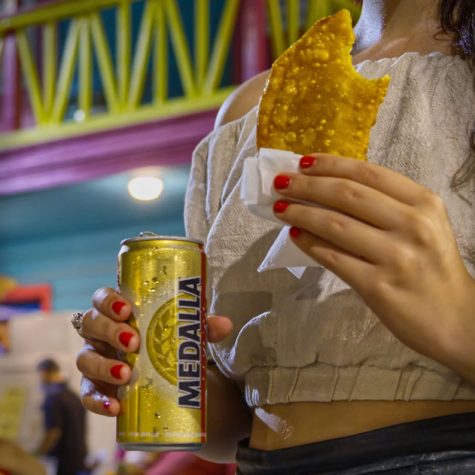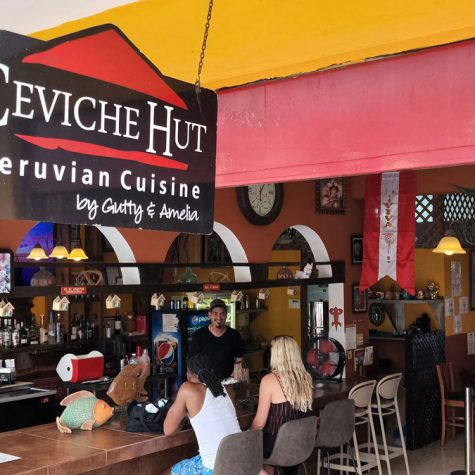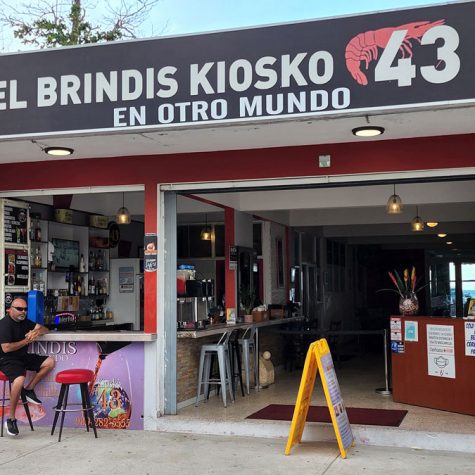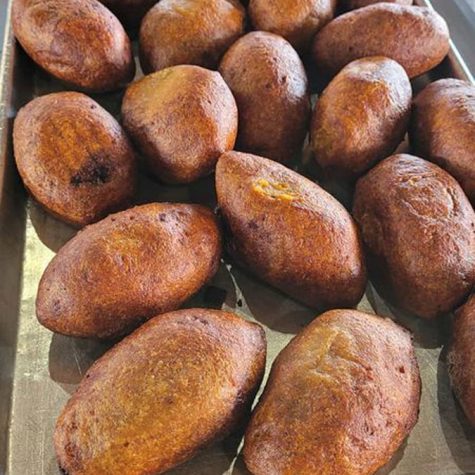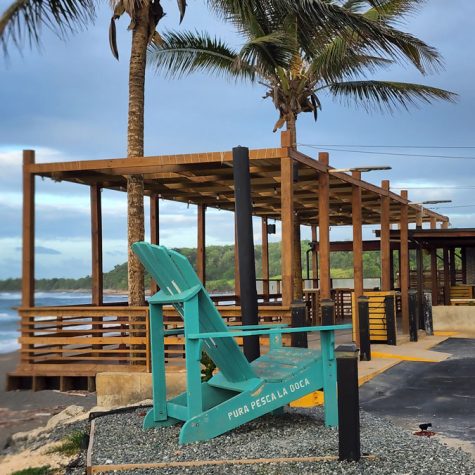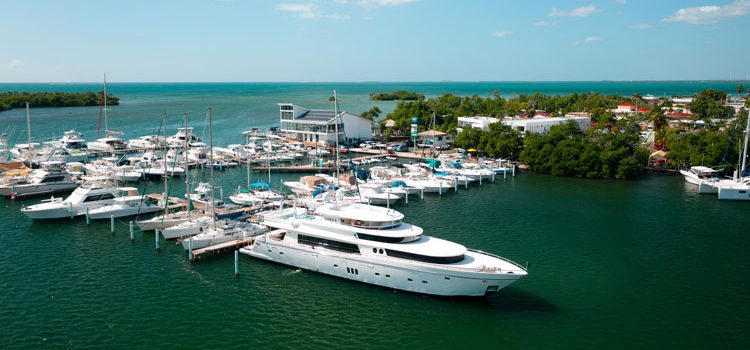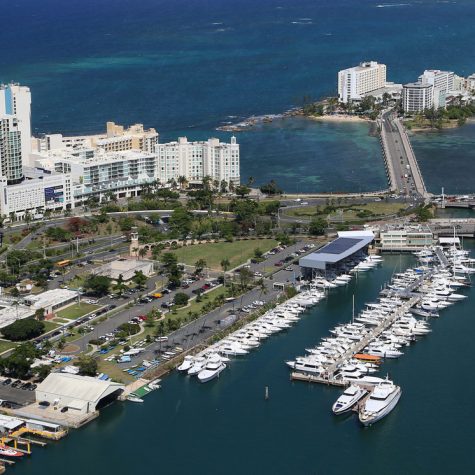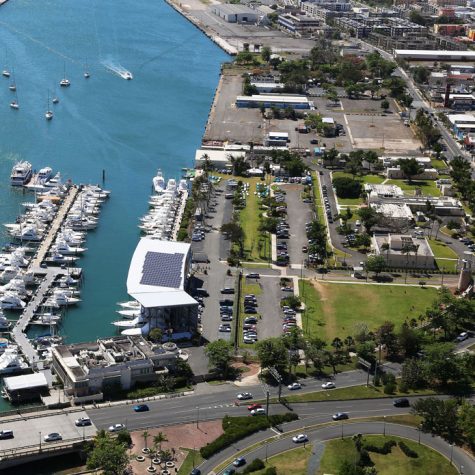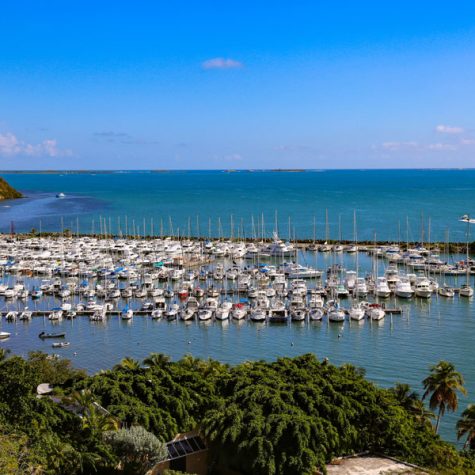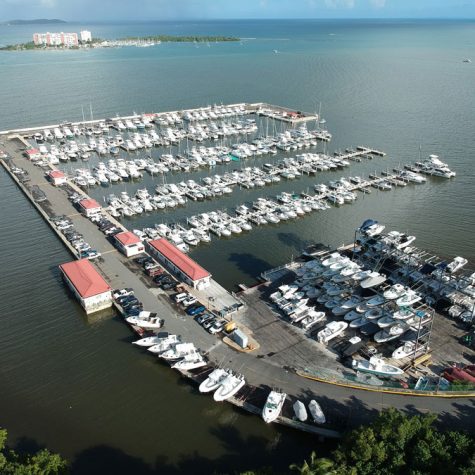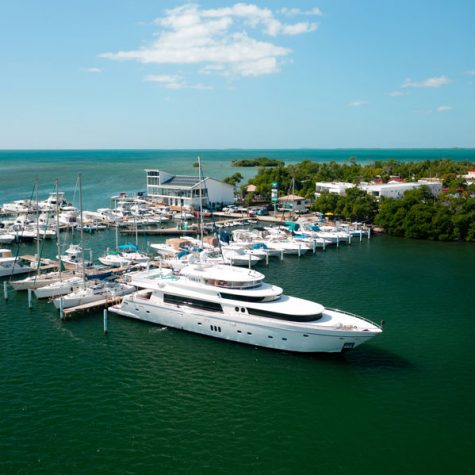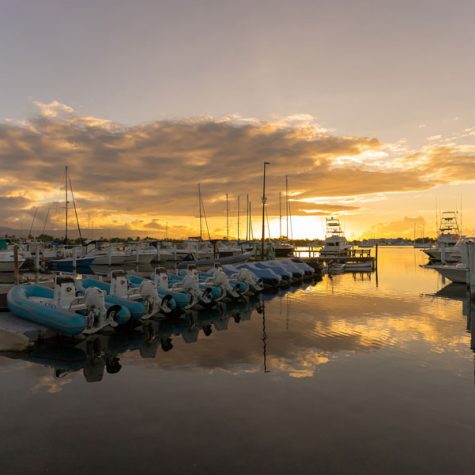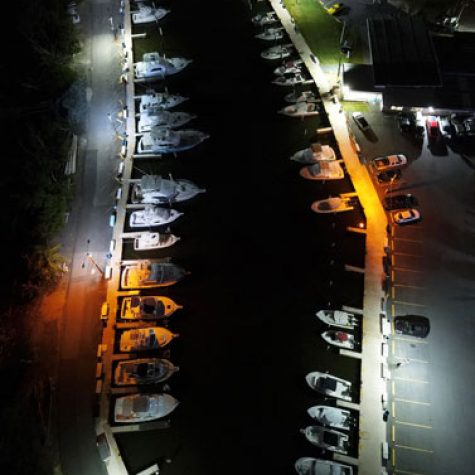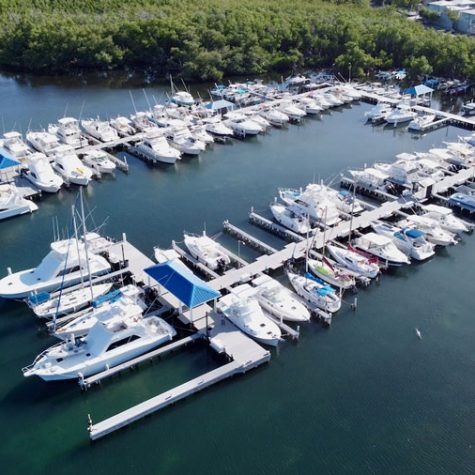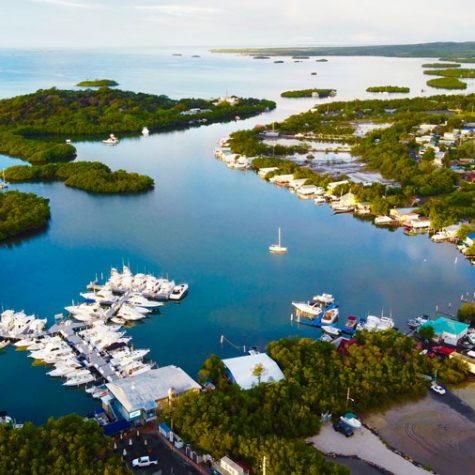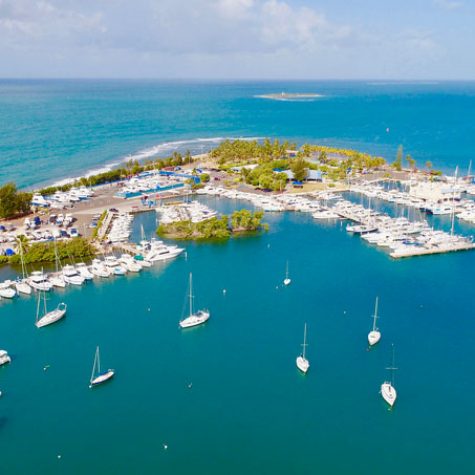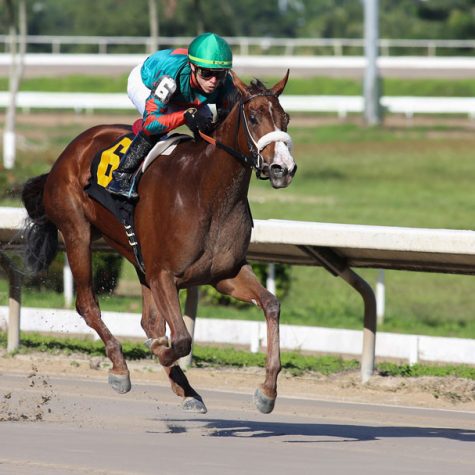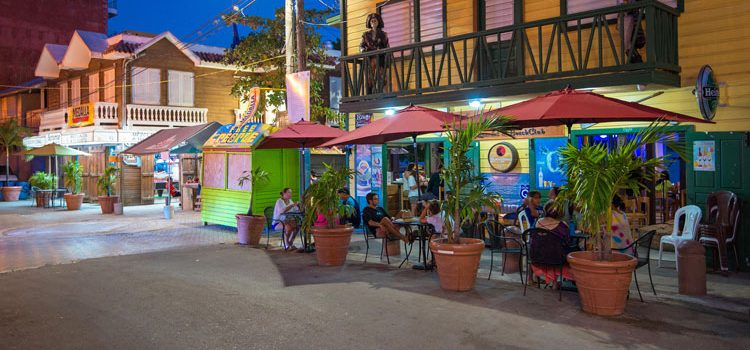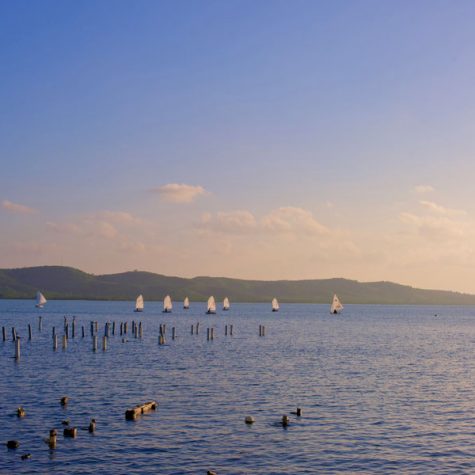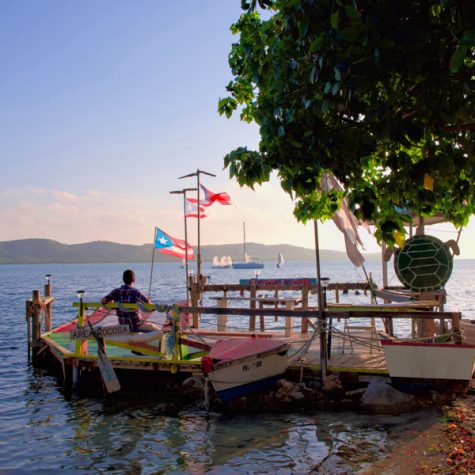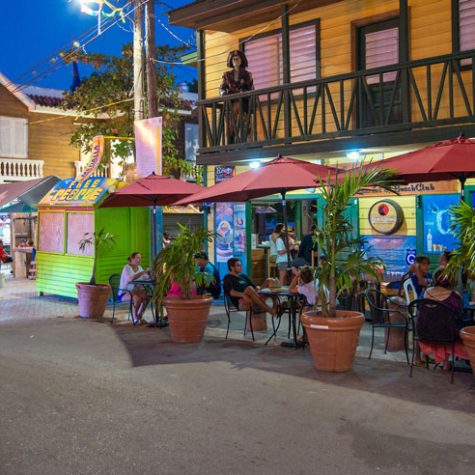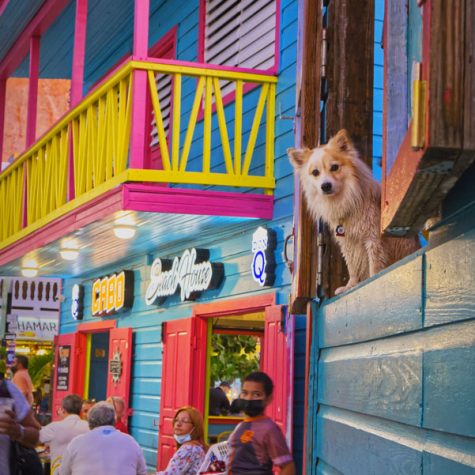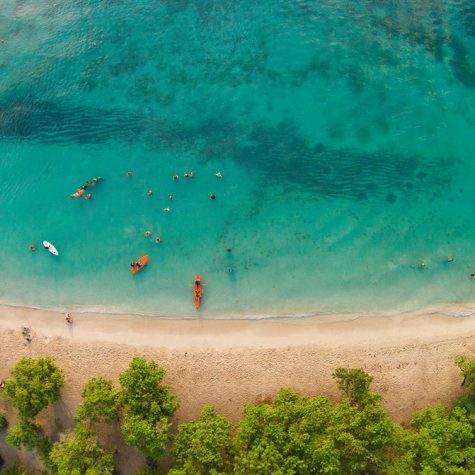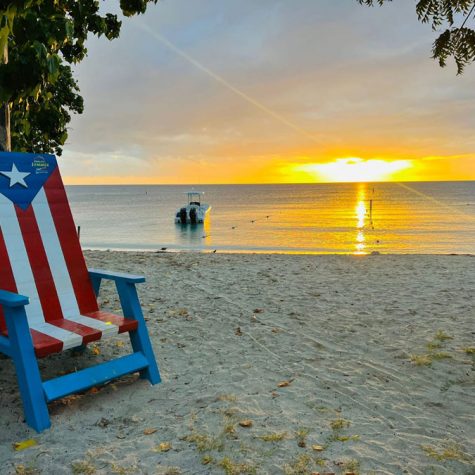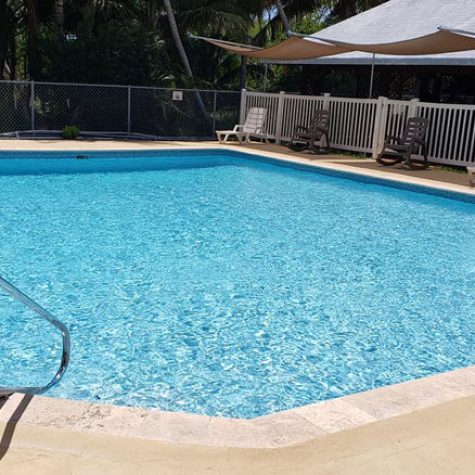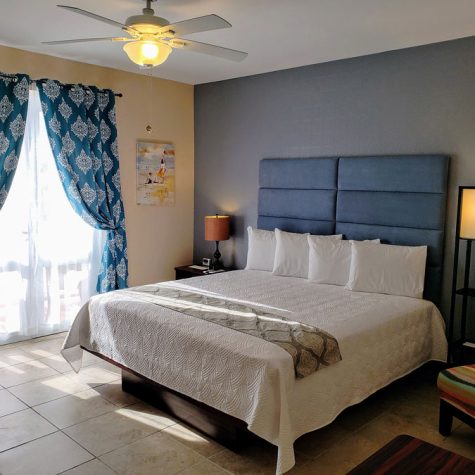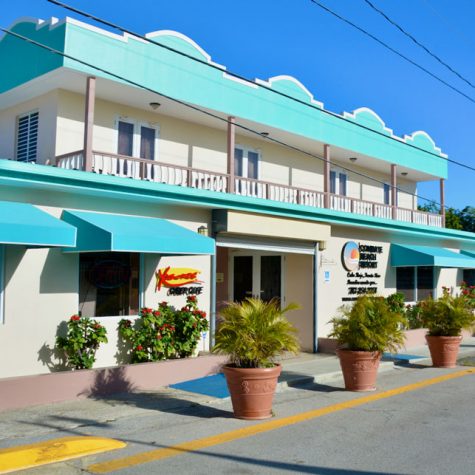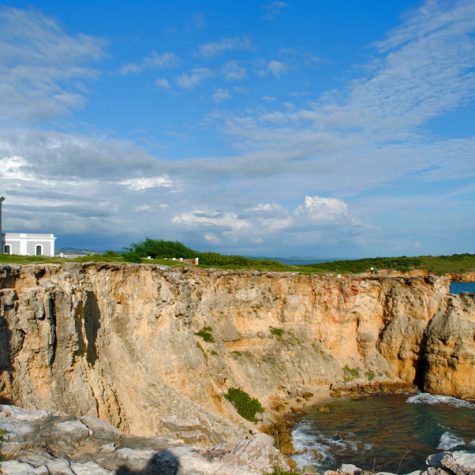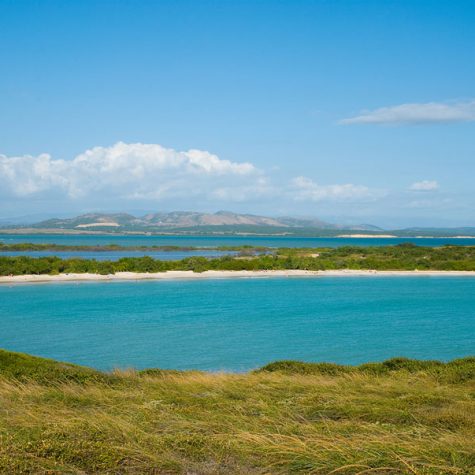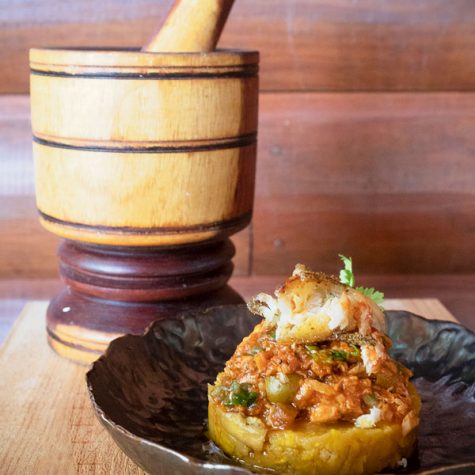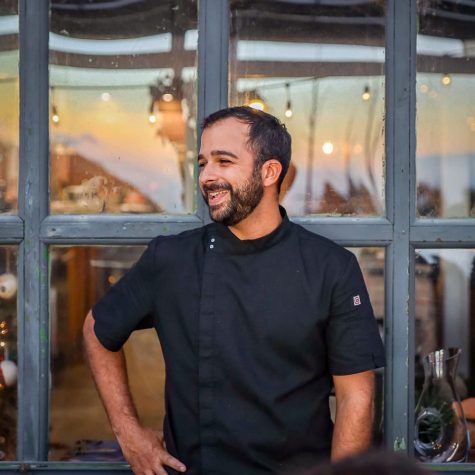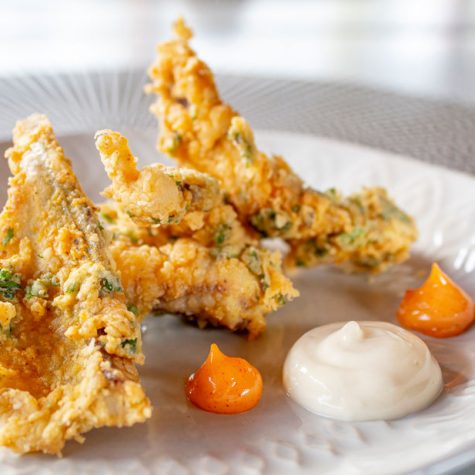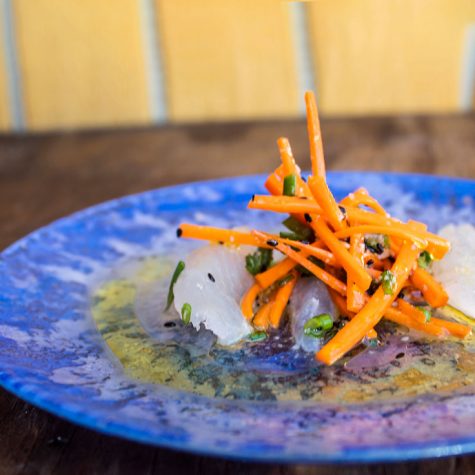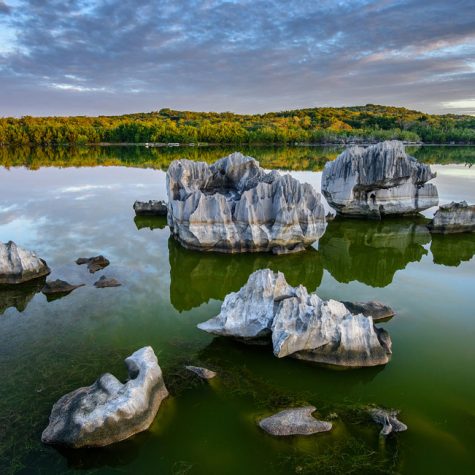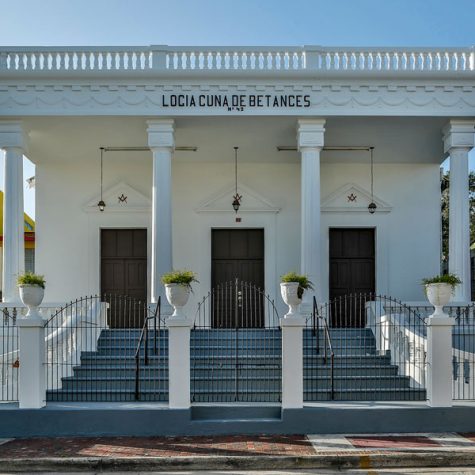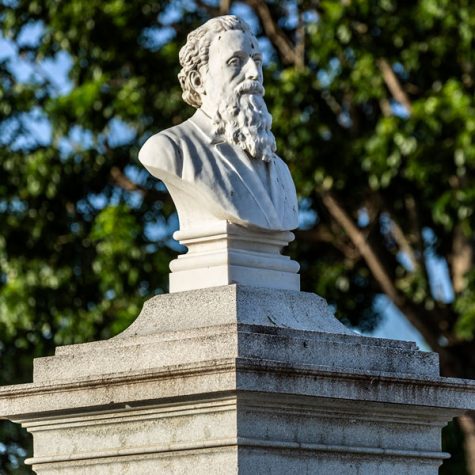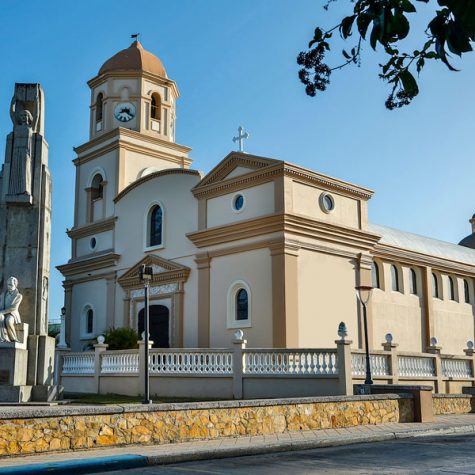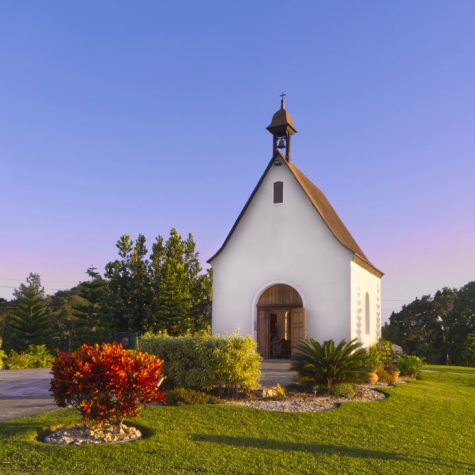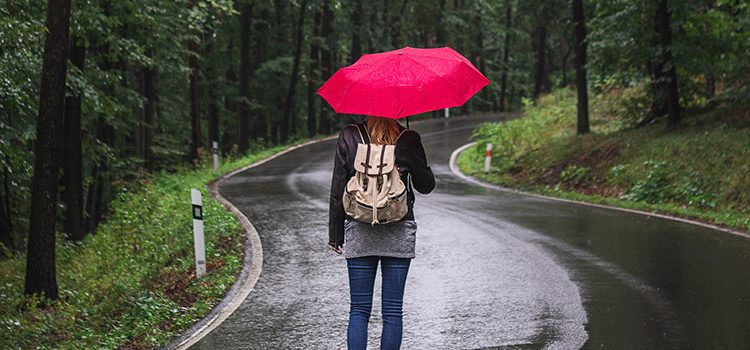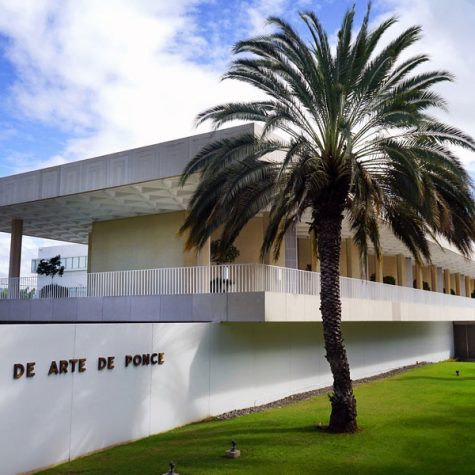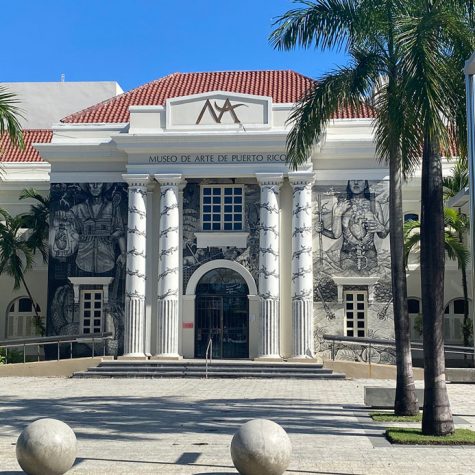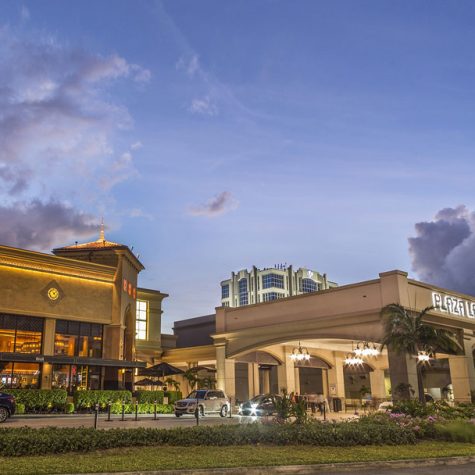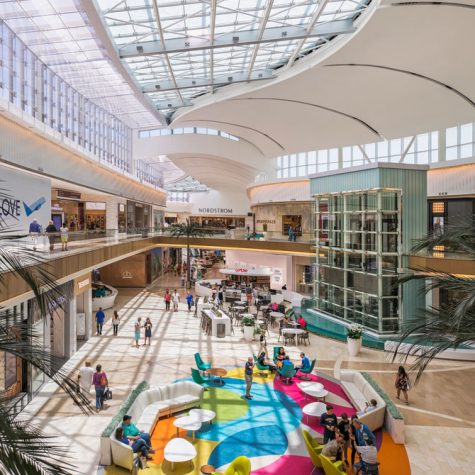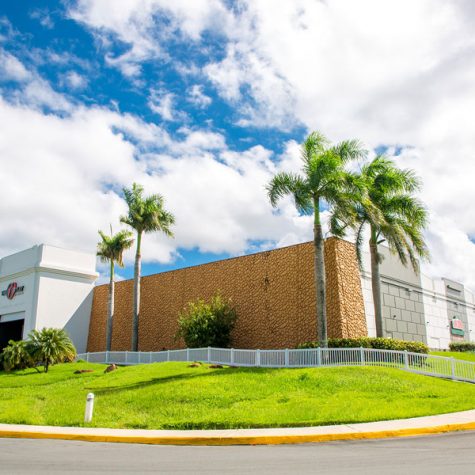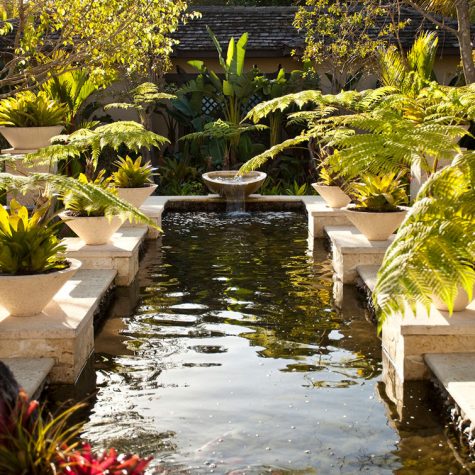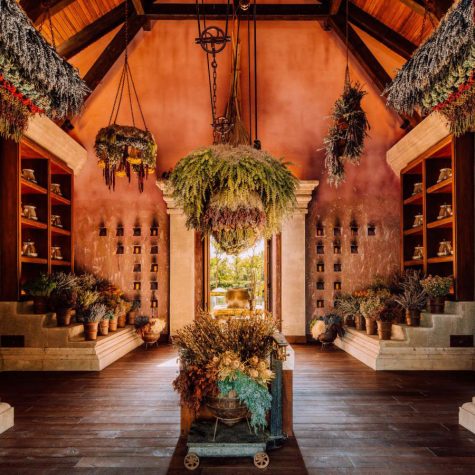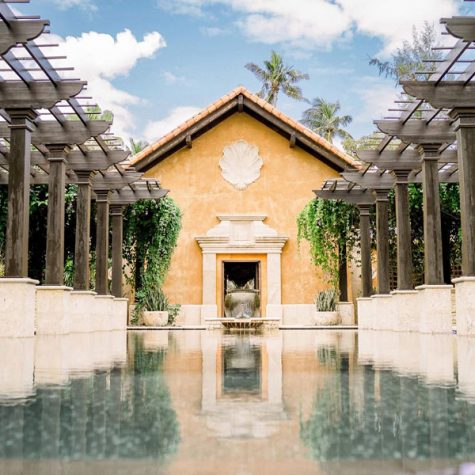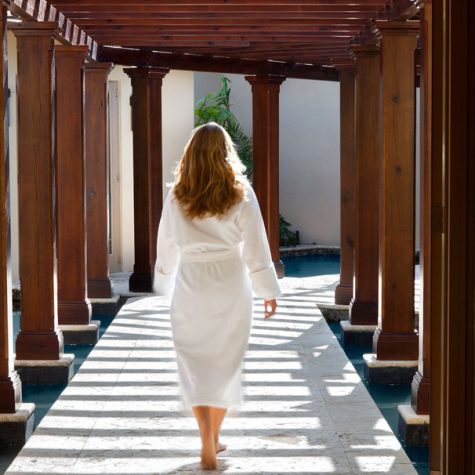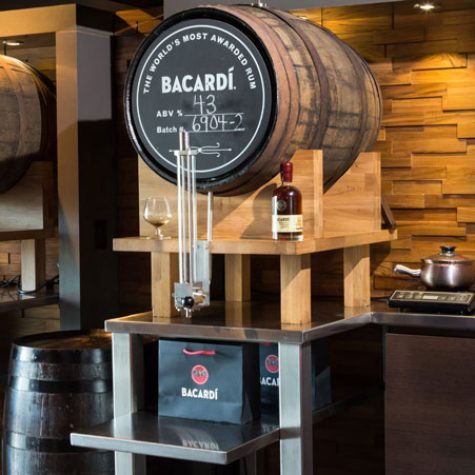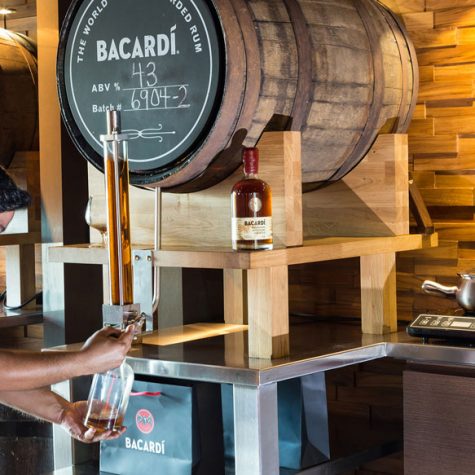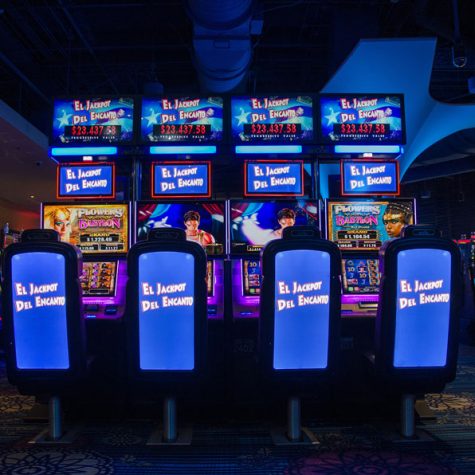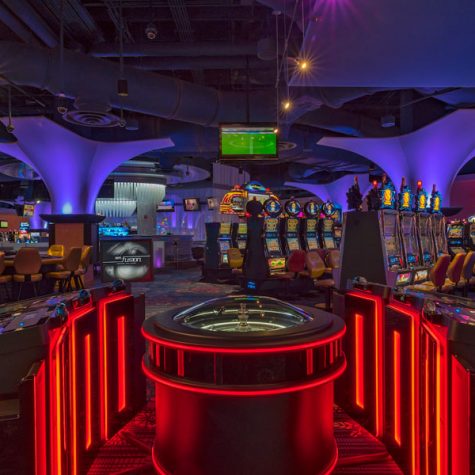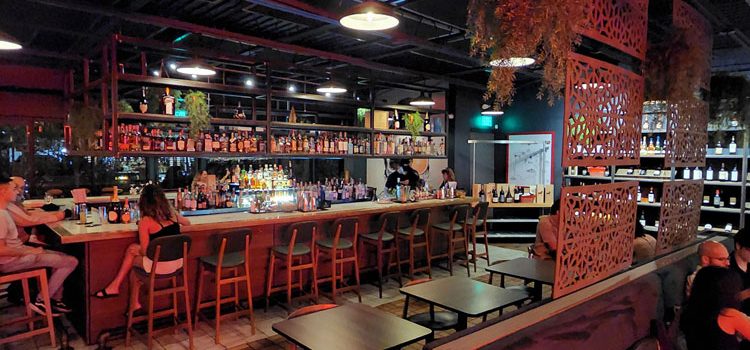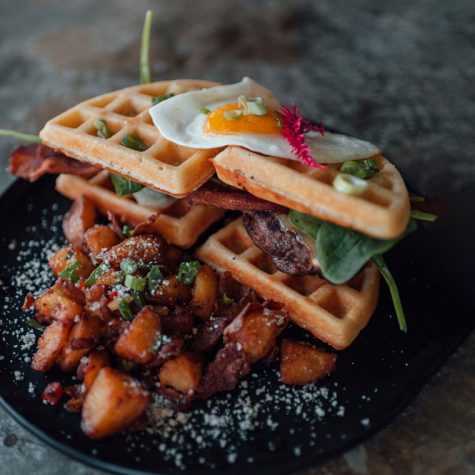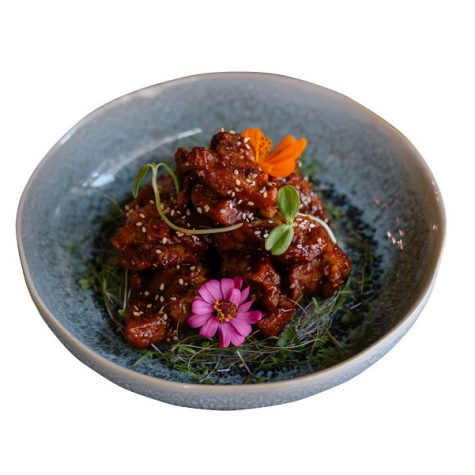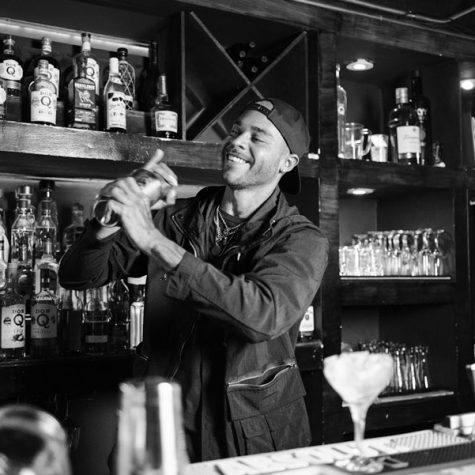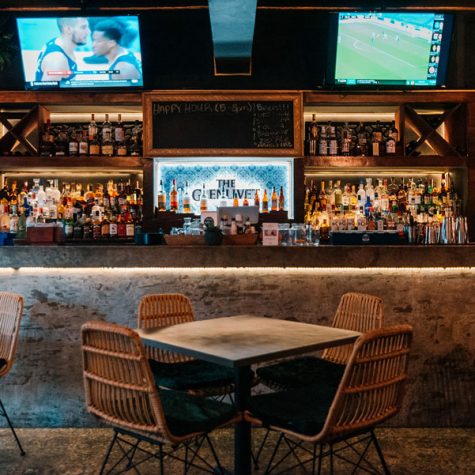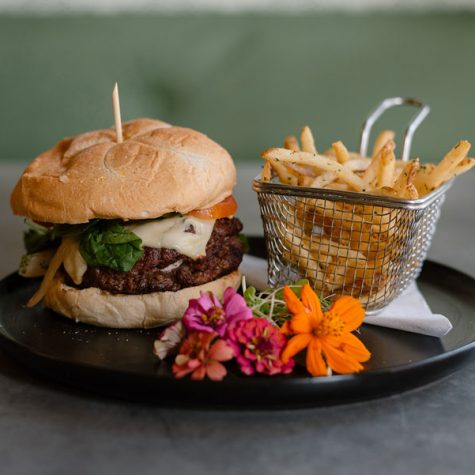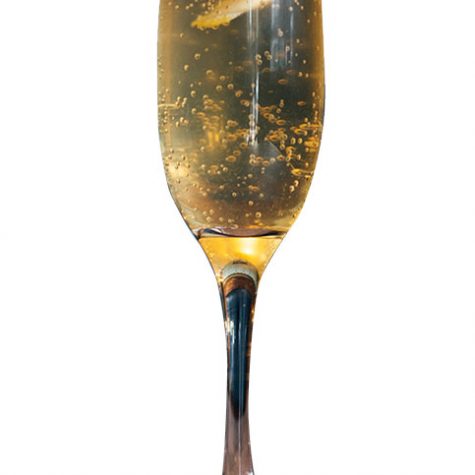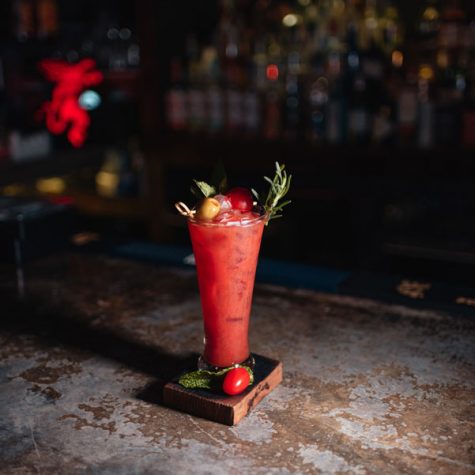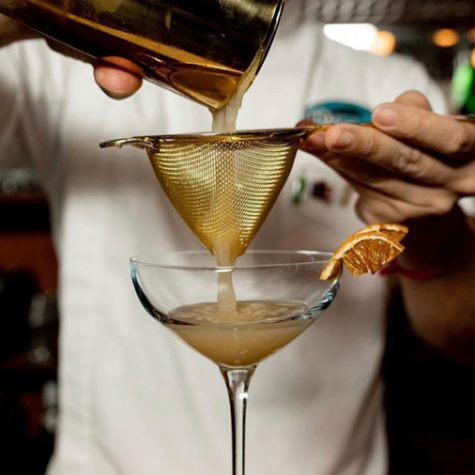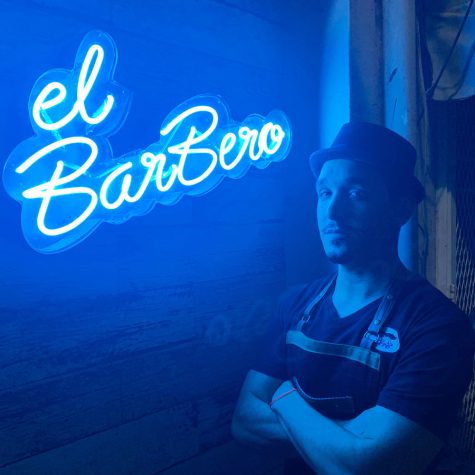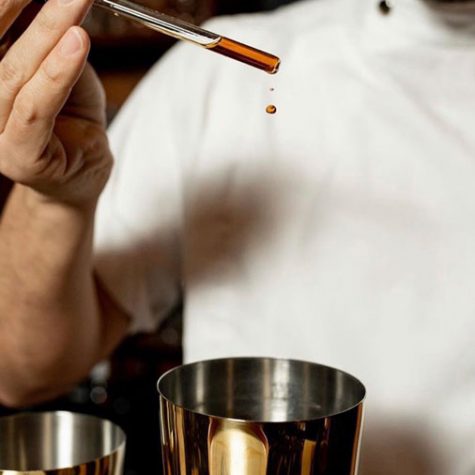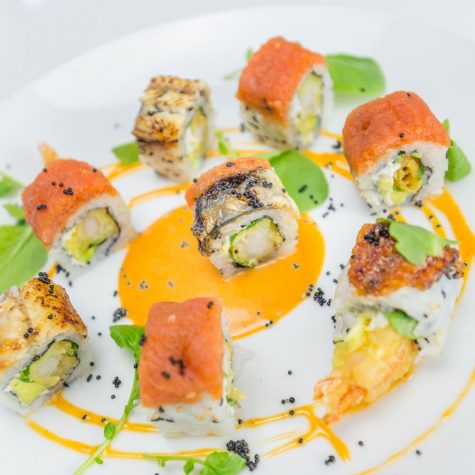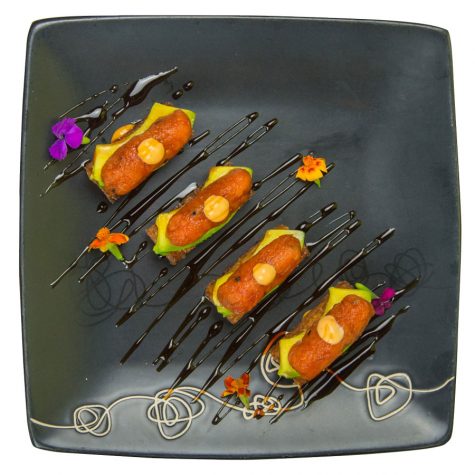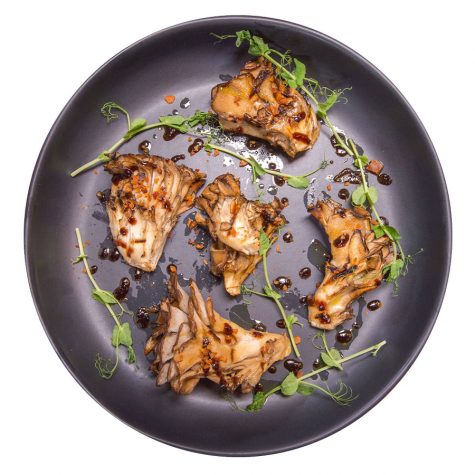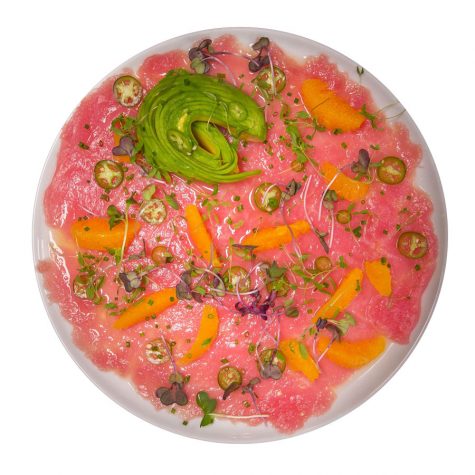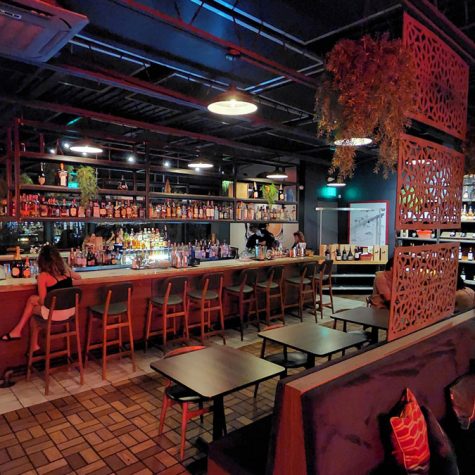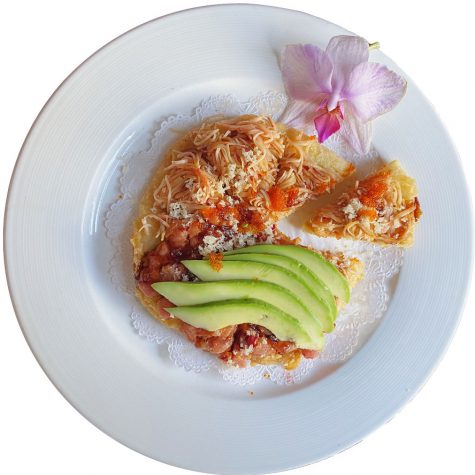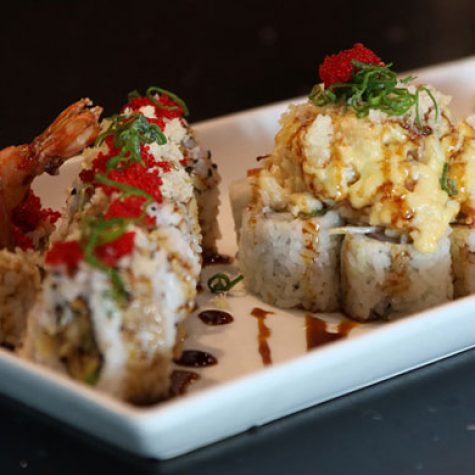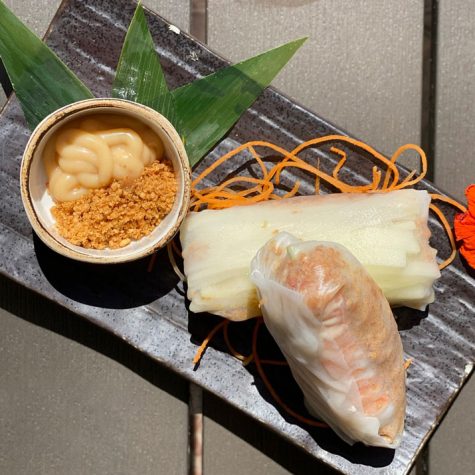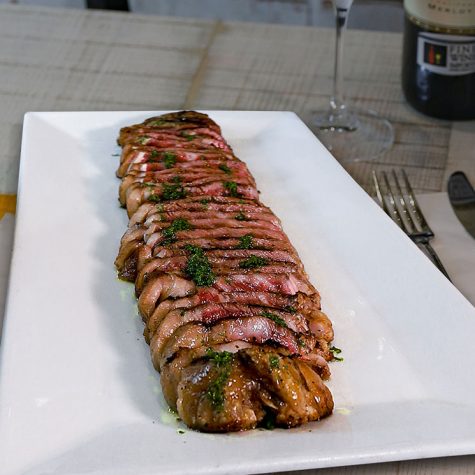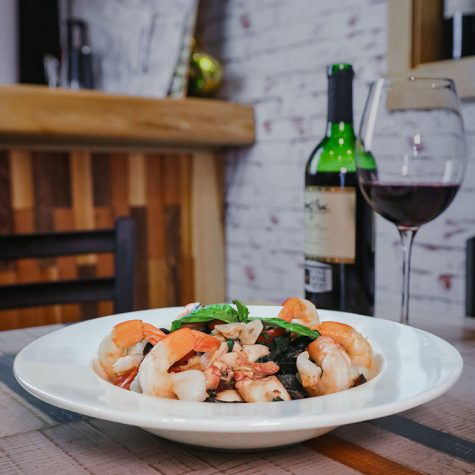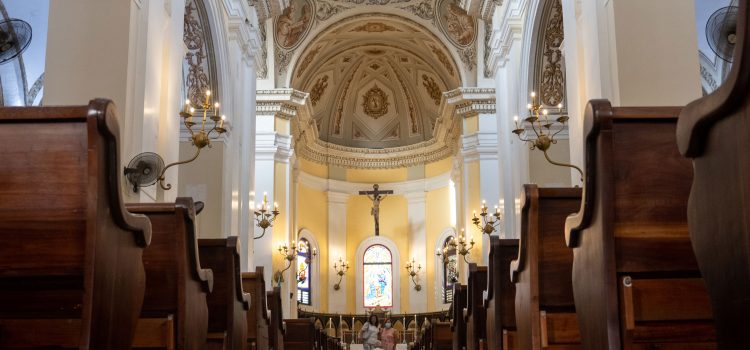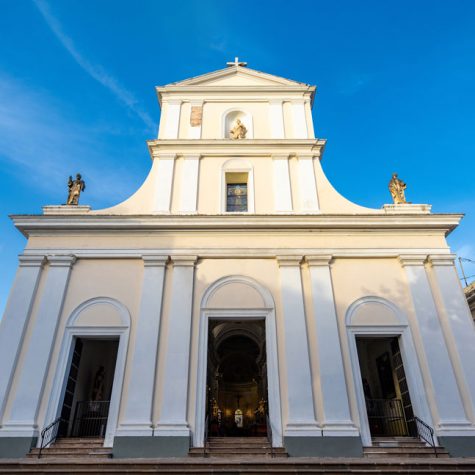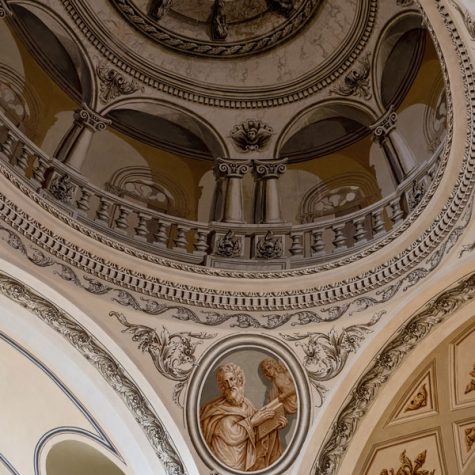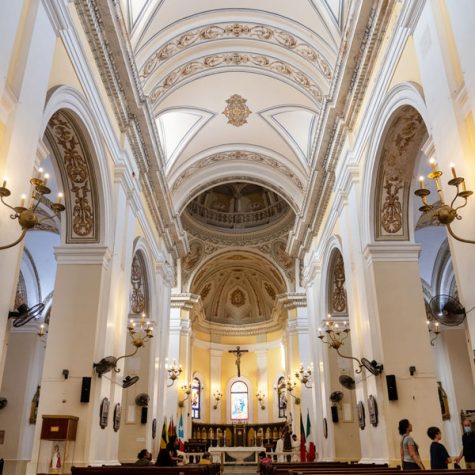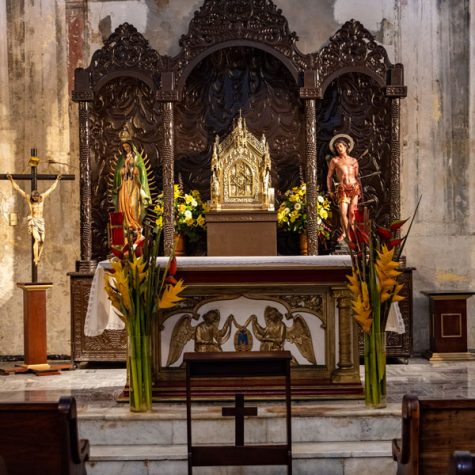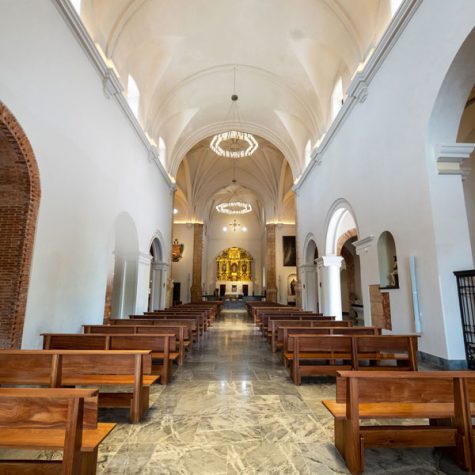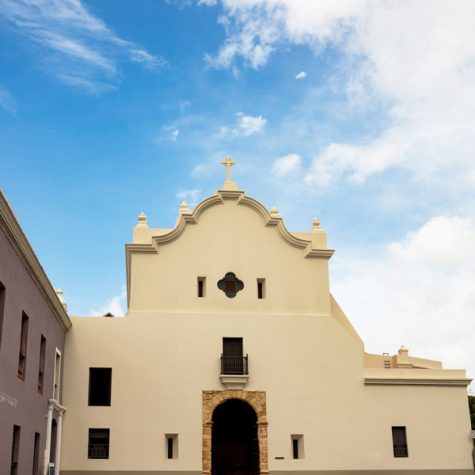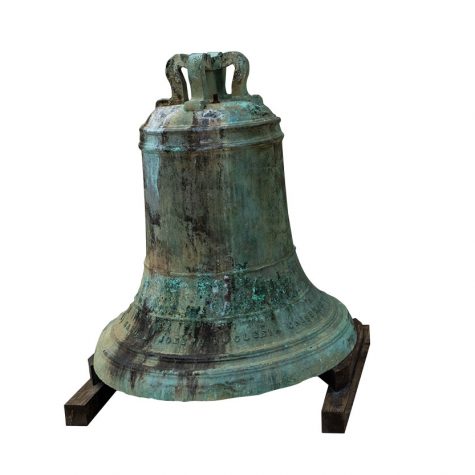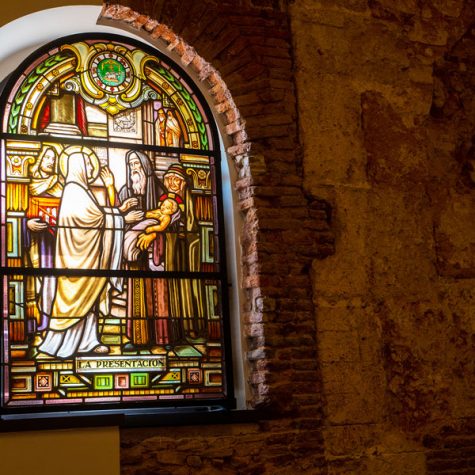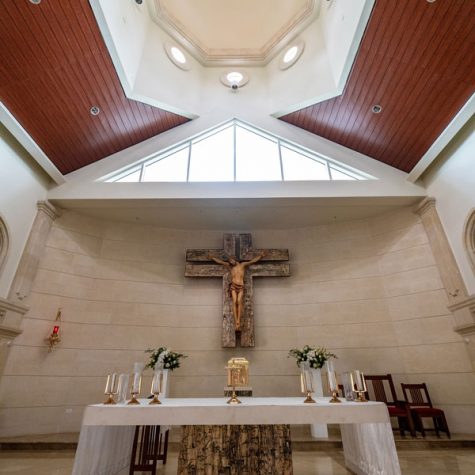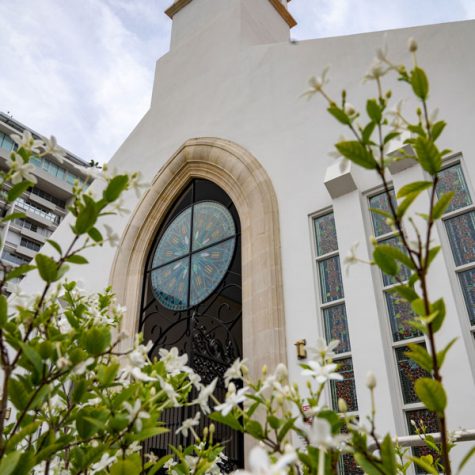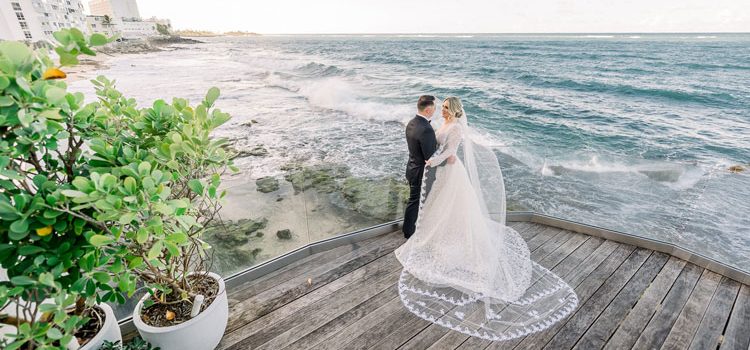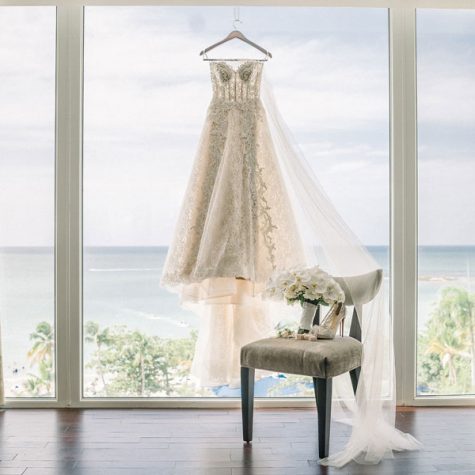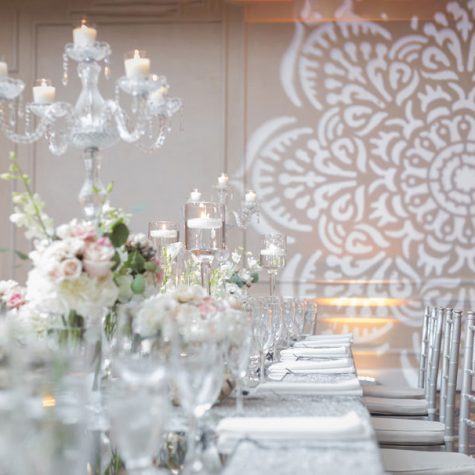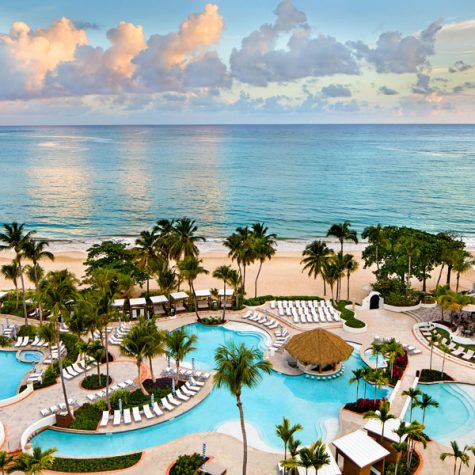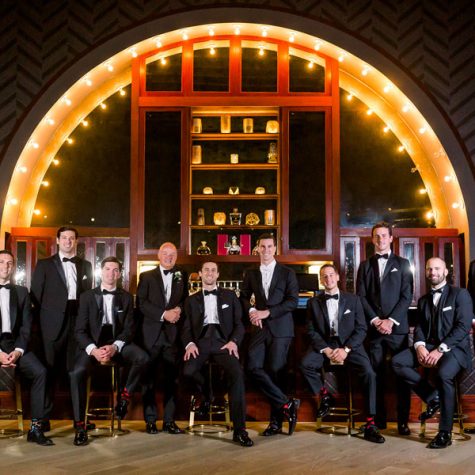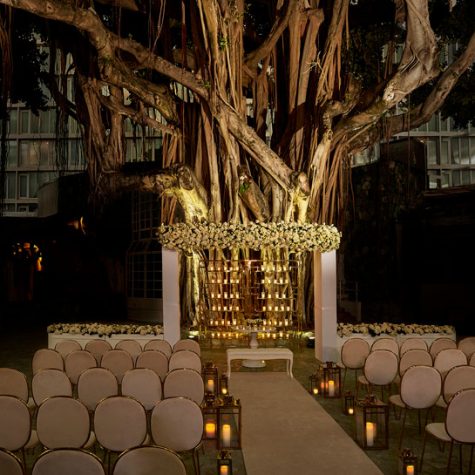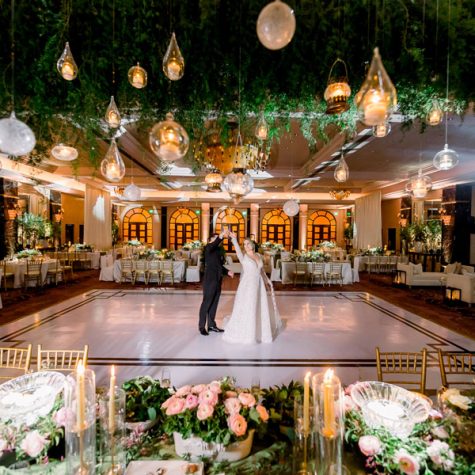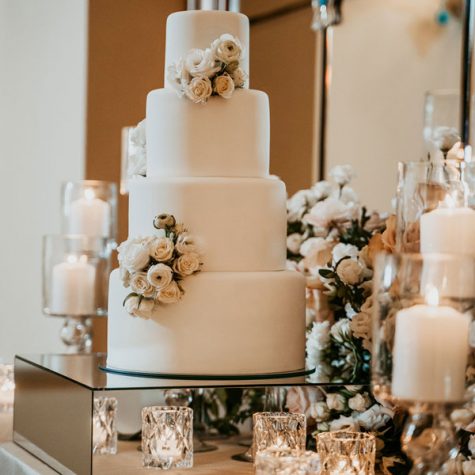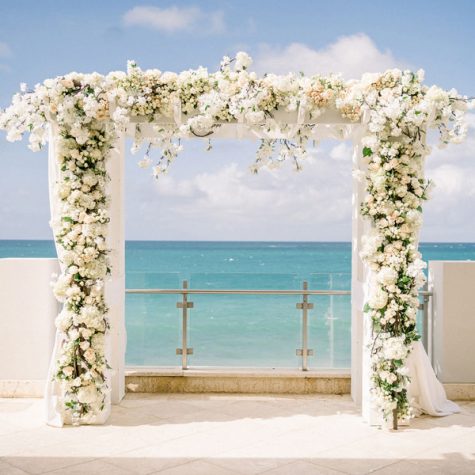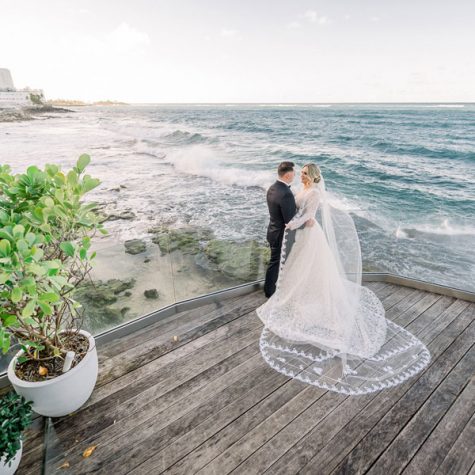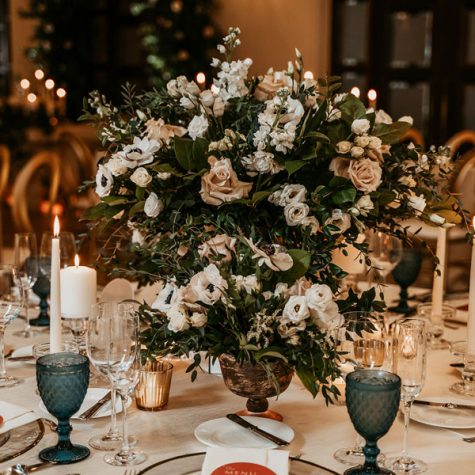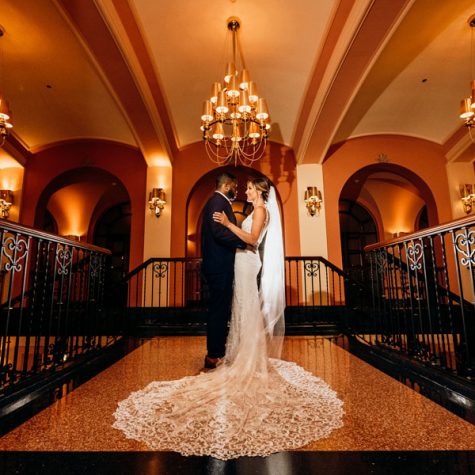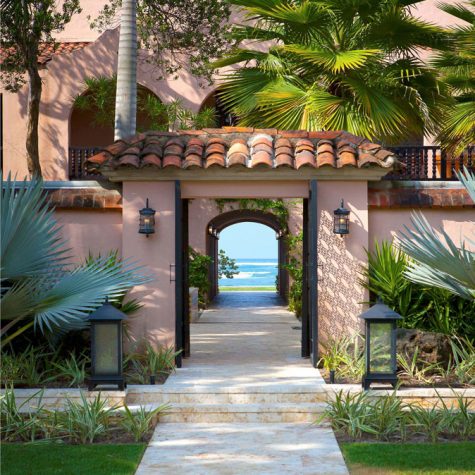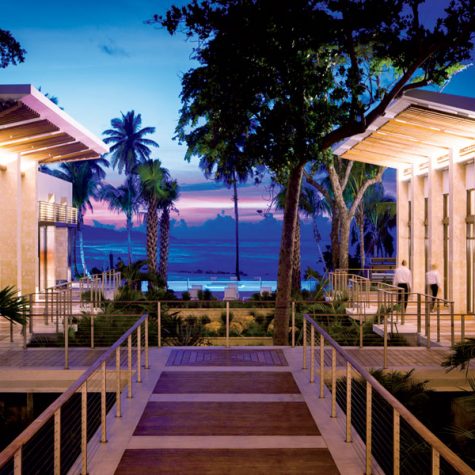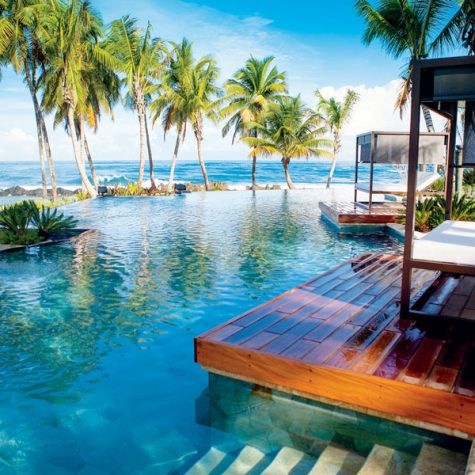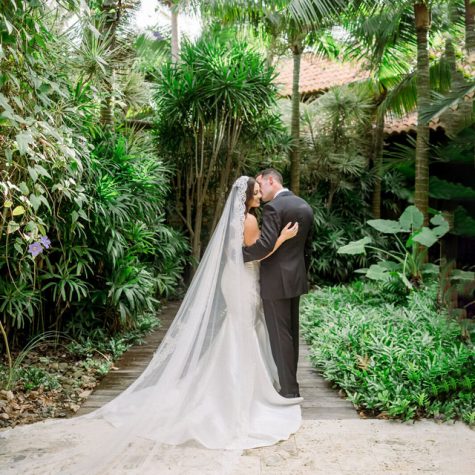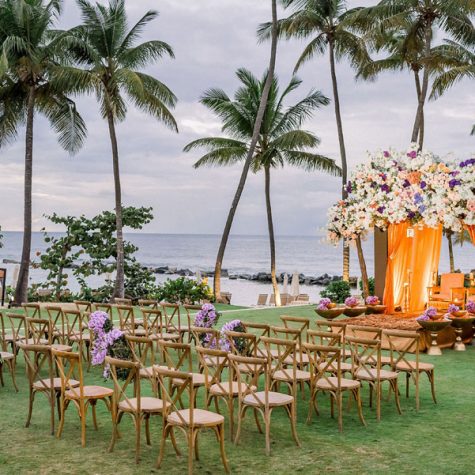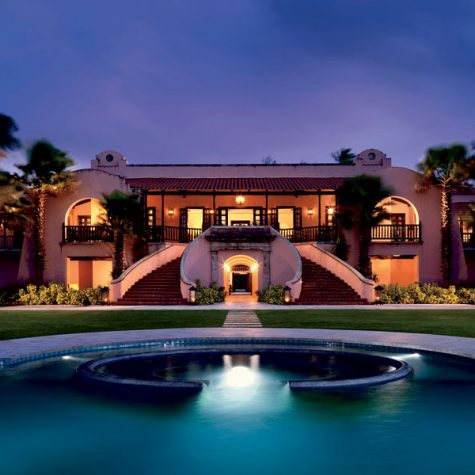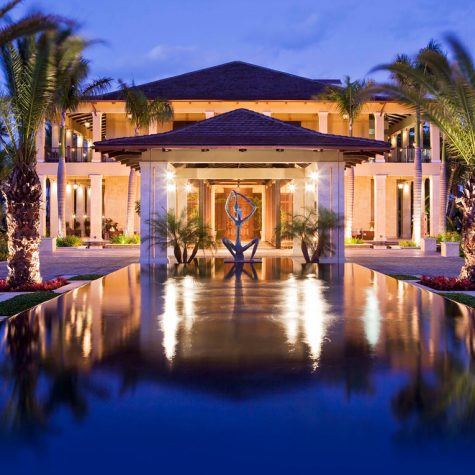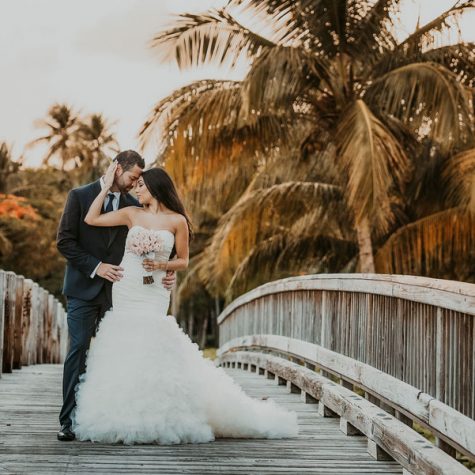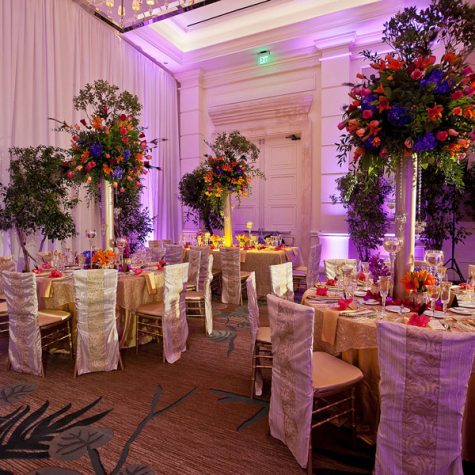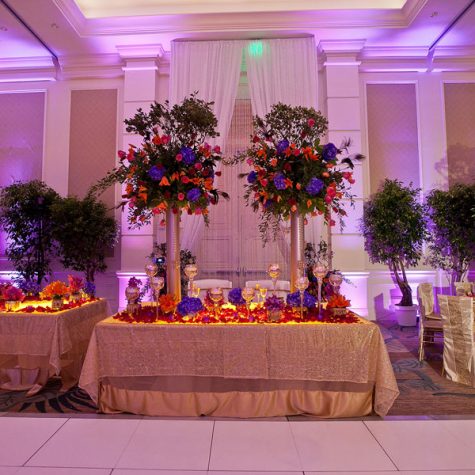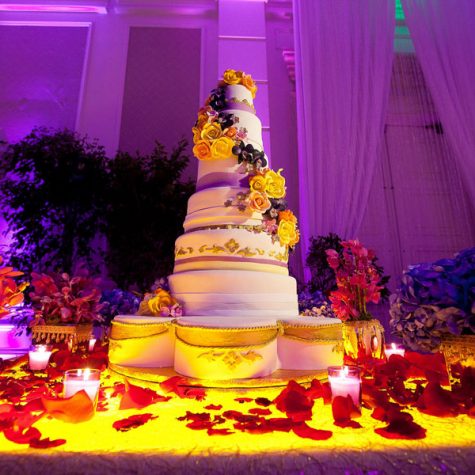Small hostelries make your vacation feel at home
Staying in a hotel and lounging on a beach was the typical vacation for visitors to Puerto Rico. Not anymore.
Staying in a hotel and lounging on a beach was the typical vacation for visitors to Puerto Rico. Not anymore.
More travelers nowadays seek a fuller experience of the island. The beach is still important but travelers also want to immerse in Puerto Rico’s local color, to learn about its vivid culture fusing Spanish, African and American influences, to get transported into that mellow tropical rhythm that is so much a part of being an island in the Caribbean. Staying in a guest house or a bed and breakfast (B&B), is part of the adventure, a way for an outsider to get closer to the destination and its people.
The allure of a small hostelry is easy to see: small is cozy, inviting, and personal. Guest houses and B&Bs, not to be confused with Airbnbs, are usually located in a residential neighborhood so staying in one spells a more intimate experience of a destination. Their owners, who are Puerto Ricans or locals with many years of residency, engage with visitors on a closer level, sharing their knowledge of the island and directing visitors to places of interest often overlooked by travel guides.
B&B facilities in Puerto Rico have no more than six rooms, include breakfast as part of the hotel rate, and operate out of the home of the owner, or a building within the owner’s property. There are currently 10 B&Bs on the island.
Sprinkled throughout the island, each B&B is a window onto a different corner of Puerto Rico, giving visitors an engaging portrait of a richly multifaceted island.Some are in the city, others in the country. Each enchants in its own special way.
Casa Sol and Casa Isabel are a fine introduction to San Juan, their locations bridge the metropolis’ colonial past with its cosmopolitan present.
Casa Sol, located on the eponymous street, is no different from the centuries-old colonial homes that grace the old city, San Juan’s mythical center. It is a two-story house painted a cheerful canary yellow with a large, imposing iron gate at its entrance. Its owners, Eddie Ramirez Castellano and wife Tisha Pastor have lovingly turned the ground floor of their home into a welcoming retreat for world travelers.
“The biggest difference between a commercial hotel and a B&B is the relation we have with guests; it’s very personal. We spend a lot of time with guests,” says Ramirez, a trim young man with the cool of a Zen master and the amiable charm of a host.
Casa Sol opened in December of 2013 and for the past five years it has been singled out for excellence by Trip Advisor. In 2019 it entered the travel website’s Hall of Fame. It is one of four B&Bs on the island that are green. It eschews plastic and gets its energy from solar panels on its roof. Guests are given small glass bottles to carry water around and are invited to take the 5-minute shower challenge. It turns out that staying within that limit gives you an extra hour and a half of free time per year not to mention that it saves more than 12,000 gallons of water yearly. Ramirez also buys in bulk to reduce waste. Casa Sol proudly displays its Green Key certification, which identifies it as a sustainable business.
Guests at Casa Sol are drawn from all over, including faraway places in French Polynesia, New Zealand, Japan and Russia. What they find is a home away from home. Its hub is the glorious, plant filled patio, typical of colonial homes, where morning breakfast is served and around which the five bedrooms are laid out. The ground floor also accommodates a comfortable kitchen and a small sitting area with rocking chairs and a writing desk, also for the use of guests. Ramirez and his family live upstairs.
Each of the guest rooms has its own name and is unlike the other. The rooms are comfortable and decorated with Puerto Rican artworks. On the beds, a doll created by crafter Gloribel Delgado waits to be tucked in at night. Little chocolate squares made with Puerto Rico-grown cacao are a welcome treat for guests. Another treat handed out on arrival: a delicious popsicle created by a local company named Señor Paleta.
The work of love that is Casa Sol is not only reflected in the beautiful way that Ramirez has decorated the place but in the fact that so much of what is in the building was salvaged from destruction or recycled. He purchased the building as a ruin. Over the course of two years, the building was restored using the bricks and ancient beams of the original structure. A tub in one of the rooms was rescued from a Bayamon home where it was found covered in earth, with a tree growing out of the drain. Other rescued items include the writing desk, a statue of St. Francis (now standing in the patio), and the banister spindles on the house stairs. The patio floor was made using smashed up damaged bricks.
If Casa Sol reflects Puerto Rico’s past, then Casa Isabel reflects its cosmopolitan present. This B&B is located in one of San Juan’s most colorful neighborhoods, the Loiza Street area that has become a veritable gastronomic epicenter in recent years. Casa Isabel is right in the heart of this sector, ready to give visitors a taste of a modern city’s culinary predilections. The area teems with regular bars and wine bars, eateries, and restaurants like Silk (oriental fusion), Bebo’s (Puerto Rican food), Fleria (Greek), Sabrina (international), Round Eye Ramen (Japanese), Pinky’s (the place for breakfast, or lunch). And there’s more.
In business since December 2014, Casa Isabel is based in a lovely 1930s Spanish colonial house with a pastel green exterior set off on one side by a rampant fuchsia bougainvillea. It has five rooms, each with a private bathroom and a small refrigerator, and several communal rooms, including a beautiful porch with an oblong sofa, the perfect place to enjoy a late afternoon drink. In front of the house, the small garden is shaded by trees and a couple of stone benches invite to a moment of quiet relaxation, or perhaps conversation with a fellow guest. The ocean is just down the street so you get the both of two worlds: city and beach.
Margarita Buenaga, its owner, said she inherited the house from her great aunt. At one point selling it seemed the best course but a nephew encouraged her to turn it into a B&B. Despite her lack of experience in tourism (she worked in the insurance industry), Buenaga is pleased with how things have worked out. She said she gets a lot of guests from Canada, Europe and the Orient. Many are people who come to the island on business trips. Guests are well looked after and she attends to all their requests, even handling their laundry if necessary. “This is their home,” she said.
Beyond San Juan is the beautiful, luscious Puerto Rican countryside. Casa Flamboyant in Naguabo and Dos Aguas B&B in Rio Grande immerse you in the island’s exuberant natural world. Both are magical and secluded.
A stay at Casa Flamboyant is “like stepping into a different world, one that is more tranquil, calm, and full of nature,” said Ricardo Miranda who runs the property with his partner Florin Lepadatu. They purchased the property five years ago from an American woman who ran it as a B&B. While ownership changed, the name of the B&B stayed the same.
This is a very intimate hostelry with only three beautifully appointed bedrooms for adults, as no children are allowed. Each is equipped with its private entrance, bathroom, and a fridge. Miranda said guests are served a two-course breakfast consisting of fresh fruit (from fruit trees in the property) and an entree that varies each day. Visitors can always drive to nearby Naguabo or Fajardo for lunch or dinner but many guests like to stay put and cook a meal using the grill or microwave available on the premises.
There is plenty to keep them occupied. On the spectacular rooftop there is an inviting pool filled with spring water and sweeping views of the ocean and the surrounding hills of El Yunque National Forest, the only tropical rain forest in the U.S. Everywhere the eye can see there is green foliage, a soothing sight that puts the soul at ease. Nature offers many diversions. Visitors in a hiking mood can walk two miles to the Naguabo-side entrance of El Yunque where trails beckon or they can have a fun time frolicking in two natural pools formed by falling water from two waterfalls in the property.
Says Miranda: “Our motto is disconnect so that you can re-connect with nature and with each other.”
Visitors to Dos Aguas are likewise seduced by its location. “From the moment the gate opens, you feel like you have stepped in a whole new world. You feel a sudden peace. You start connecting with nature in a completely different level,” wrote a visitor on the B&Bs Facebook page.
Located about 30 minutes away from San Juan, Dos Aguas occupies a large commodious house with lots of windows and shady open porches. All around is the exuberant, green vegetation, as if nature were wrapping its soothing arms around you.The house sits on a 3.8 acre property that takes its poetic name from two rivers, Rio Grande and Espiritu Santo. They meet in front of the house, hence Dos Aguas, which means two waters.
The hostelry’s four rooms are simple but with a luxurious feel: large, comfy mattresses, elegant accessories, earthy colors. It opened its doors in December 2016, closed briefly in late 2017, and was back in business by January 2018.
Carla Arraiza, who runs Dos Aguas with her mother Ivonne Gonzalez, said the property had been home to her grandparents and turning it into a hostelry was a way to preserve it. Her interest in travel and the tourism industry also factored in. She wants to show visitors that Puerto Rico can produce quality. “I love to give them personalized attention,” she said, referring to her guests who hail from Canada, the U.S., Mexico and Europe.
At Dos Aguas, they find an ideal place in which to luxuriate in the natural environment but with plenty of other alternatives for diversion like kayaking, paddle boarding or riding a boat down the river. El Yunque is a short distance away and night tours of the phosphorescent bay in Fajardo can be easily arranged. Or guests can visit the beaches in Luquillo and Fajardo, which are close by.
“It’s a space that is near everything but gives you the sensation of being far away,” said Arraiza.
Puerto Rico’s guesthouses share the same goal of B&Bs: to make visitors feel at home and give them a special experience of the island. There are about 29 of them and they are somewhat larger operations as they can have a maximum of 27 rooms. Most are located on the Puerto Rico mainland although a couple can be found in Culebra and Vieques. These two, idyllic little islands — a favorite week-end destination of many Puerto Ricans — are the perfect place to get away from it all and enjoy all the activities one associates with the surrounding sea like swimming, snorkeling, windsurfing, sailing, diving, kayaking, or just plain sunbathing on the sand.
Located some 17 miles east of the Puerto Rican mainland, Culebra is only 7 miles long by 5 miles wide and has a population of fewer than 1,400 people. Its beautiful beaches, some of which can only be accessed by car or boat, attract visitors from all over the world. The most famous by far is Flamenco, a wide expanse of white, coral sand stretching for about a mile around a sheltered, horse-shoe shaped bay with shallow, turquoise waters. It was voted the number one beach destination by The Travel Channel.
Club Seabourne is the only boutique hotel in Culebra. It is nestled within the hillsides with breathtaking coastal view of Fulladoza Bay. Each of its rooms and villas are exquisitely furnished and feature a bespoke interior and exterior design. Guests can opt to take at the Caribbean chic property a refreshing dip in its pool, pure relaxation in a hammock within its lush landscaped gardens or visit one of the region´s breathtaking beaches. Enjoy world-class amenities and services, casual dining, and a host of fun activities. At Club Seabourne get away from it all and immerse yourself in a unique experience that can only be described as Caribbean chic.
Mamacita’s Guest House is right in Culebra town, two colorful buildings painted in joyful pastel colors, standing right next to a canal. It has 16 rooms, including guest suites with balconies overlooking the nearby ocean. One room in particular, N. 301, gets a high rating for its “spectacular view.” Mamacita’s is more than a guest house as it also runs a popular bar and restaurant with a menu centered on seafood like lobster, fish and shellfish though it also caters to meat eaters with such selections as T-bone steaks and churrasco. The bar is well known for one drink in particular: the “legendary Bushwacker,” a synthesis of coconut cream, coffee liqueur, rum and cinnamon.
Vieques, 8 miles east of Puerto Rico, is 20 miles long and 4.5 miles wide, making it somewhat larger. It has one main town, Isabel Segunda on the northern coast, and Esperanza, a fishing village on the southern end. This mostly hilly island also is famous for its gorgeous, pristine beaches. Villa Coral Guesthouse, a 7-minute walk from Esperanza, is a Mediterranean-style house with beautifully manicured grounds and lovely views from its sun deck. It makes a convenient home base for daily excursions to surrounding beaches, some of which are completely deserted if you go early in the morning.
The guesthouse has seven rooms, all with their own private bathroom and mini fridge. They are comfortable, simple but nicely decorated with local artwork and flowers. Additional rooms can be found in a cottage, named Coralina that sleeps two people and is a two-minute walk from the guesthouse; a separate two-bedroom apartment with one bath is also available. Both are operated by the same owners.
You have to ‘Chinchorrear’ to taste the best of Puerto Rico
If there’s one thing that’s true beyond a shadow of a doubt about Puerto Ricans, is that we love to party and eat.
If there’s one thing that’s true beyond a shadow of a doubt about Puerto Ricans, is that we love to party and eat.
And not only do we love to eat, but we will trek across the island looking for restaurants, food trucks, or holes-in-the-wall to find the best dishes. On the weekends, that tradition is known as chinchorreo, when friends and family get together to hit laid-back or off the beaten path spots, usually outside the San Juan metropolitan area, for a cold beer, pool, dance with a jukebox or live music and savor some of our best typical cuisine.
There are countless chinchorros and many fabulous scenic routes –mountain and coastal alike – but Bienvenidos found some notable coastal places that are worth including in your road trip whether going on your own with a rental car or booking a private bus with driver to take you to a predefined route when you’re on the island.
Over on the eastern side of the island are the iconic Luquillo kiosks, a strip of about 60 restaurants featuring everything from Puerto Rico’s basic dishes to a variety of international options, creative cocktails and, of course, souvenirs.
The kiosks, located on Route 3, down the road from El Yunque Rainforest, are a magnet for locals and tourists on the weekends, when the crowd is a mix of bikers, families and vacationers. Some of the kiosks face the road, and others face the gorgeous Luquillo beach. Most feature a glass-encased display of traditional fritters, meat and seafood turnovers, stuffed potato balls and corn sticks, known as sorullitos de maiz.
While the list of possibilities is long, there are several restaurants there that are worth checking out. Prices depend on how fancy or laid back the menu is.
Kiosk 50, A Fuego Bar & Restaurant offers a unique fusion of savory Colombian and Puerto Rican fare. Its menu combines both Caribbean cuisines with an assortment of food like fruits, root vegetables, as well as fresh fish and seafood. This lively restaurant has a fire station theme, which originated in honor of 9/11. As its attraction, A Fuego has a fire cabin where guests can sit and take selfies, turn on lights, sound the siren and even take a virtual ride.
Kiosk 38, Ceviche Hut, offers Peruvian fare, including ceviche, seafood paella, and chaufa rice. You may want to wash everything down with a Pisco sour, Peru’s most famous cocktail.
One of the most popular sit-down restaurants on the row is El Brindis, Kiosk 43. The fish tacos and the variety of stuffed mofongo and seafood salad options are among the most-ordered dishes, while the cocktail menu is also appealing.
On the more typical Puerto Rican side of the list is La Parrilla, the tenant at Kiosk 2. Although on the pricier side of the scale, this self-proclaimed “king of lobsters” has them in all sizes and preparations. Whether thermidor, or stuffed with seafood, all are paired with a side of typical rice and beans, or other options such as the house specialty, rice with sweet plantains.
Tucked away in a stunning enclave where the Rio Grande de Manati river meets the Atlantic Ocean in the northern town of Barceloneta, is a sector known as “La Boca.” There, you will find a cluster of some of the most relaxed — and colorful — restaurants, each offering their own delicious specialty.
Getting there is easy, as it’s a virtual straight shot heading west on highway PR22, about 45 minutes from San Juan. The point of reference is the picturesque Puerto Rico Premium Outlets, where you will hang a left once you get off the exit, onto Route 684 and follow the signs that will take you through the Barceloneta town square and miles of lush green flatlands.
After crossing the bridge over the river, the first spot you’ll see to your left is El Bohio del Gran Pescador, whose menu features fresh-caught fish, pickled root vegetables, octopus salad and a Puerto Rican staple — the mofongo — a fried green plantain dish that can be paired as a side dish, or stuffed with just about any tasty protein.
Down the road is an oceanfront restaurant that’s truly hard to miss because of the yacht sitting on the roof emblazoned with its Pura Pesca name. The casual sit-down eatery is open air and faces the Atlantic, so the ocean breeze will cool you off on a hot tropical day.
Pura Pesca features a bilingual menu and is run by a trio of young guys who serve a full range of options — anchored by the “Constant,” an oversized serving of crab with rice, red beans, Mahi-Mahi filet with tostones, or twice-fried green plantains. Not to be missed is their hefty alcapurria, a fritter that combines a mixture of starchy vegetables such as green plantains and yautia, and is stuffed with ground beef or seafood.
As a final note, it’s always a good idea to check the operating hours for each of these locations on their social media pages, as some open differently depending on the time of the year.
Let’s get this chinchorreo roadtrip started!
Marinas Anchor Offshore Adventures and Onshore Excitement
Puerto Rico holds a prime position in the Caribbean’s celebrated boating scene in no small part because of its wide array of well-equipped marinas and yacht clubs, aquatic oases that serve as secure bases for adventures both offshore and on land.
Puerto Rico holds a prime position in the Caribbean’s celebrated boating scene in no small part because of its wide array of well-equipped marinas and yacht clubs, aquatic oases that serve as secure bases for adventures both offshore and on land.
Whether angling for a world-class catch, sailing the trade winds or cruising the seas, these ports of call provide secure berths with access to essential supplies as well as more creature comforts. Importantly, they pull double duty as landing areas for incursions into Puerto Rico as well launch pads for excursions to explore the island’s sprawling coastline, offshore islets and beyond.
And while the marinas that dot Puerto Rico’s 700 miles of coastline vary by size and amenities all are set up to help get boaters out to sea in style and back on dry land safely.
There is an endless array of off-the-beaten path anchorages surrounding the main island, the offshore archipelago of Vieques and Culebra and dozens of uninhabited islet gems to explore. There are trophy catches on patrol in fertile sport fishing grounds. There are crystalline underwater wonder worlds replete with kaleidoscope of marine life. The world is your oyster and Puerto Rico is a pearl for the seafaring set.
So chart a course for adventure, assured in the comfort that there are multiple marinas around Puerto Rico where you can fuel up for the fun at sea and ease back into life on land without a hitch.
A look at Puerto Rico’s marinas and yacht clubs shows the scope of these vital facilities for the broad-ranging boating community and visitors looking to spice things up with a healthy dose of seawater thrills.
The heart of the capital city is always a good place to start
Sitting at the intersection of the capital’s various tourism hubs, the San Juan Bay Marina serves as an excellent gateway into a wide spectrum of onshore attractions nearby including Spanish colonial forts, the Caribbean’s best gastronomic scene, pulsing nightlife, glittering casinos, beautiful beaches and easy airport access. A range of onsite rentals and charters are on tap for on the water activities such as sunset sails, inshore and offshore fishing charters, jet skis, standup paddleboarding and a diving center. Dry stack, haul and repairs are just some of the services available at the full-service facility.
Anchoring the area is the Club Nautico de San Juan, or San Juan Yacht Club. With a refined ambiance in line with traditional European yacht clubs, this capital city landmarks boasts a well-respected restaurant and ballrooms and members areas including bar, library, game room and terraces looking out over the gleaming boats and glittering skyline. The club continues to play a vital role in Puerto Rico’s sailing scene through classes for kids and is the staging ground and sponsor of an annual billfishing contest that lures crews from around the Americas.
Just a few minutes from Luis Munoz Marin International Airport is Cangrejos Yacht Club, which straddles an inlet between Carolina and Piñones, the beating heart of Puerto Rico’s Afro-Caribbean culture and a favored destination for families seeking affordable eats with million-dollar views along the Atlantic Ocean. The open sea is within a stone’s throw of the Yacht Club but don’t miss out on the inshore charters that will have you stalking trophy tarpon just minutes off the dock in the world-class fishing grounds of the Torrecilla and San Jose lagoons, fish-filled mangrove mazes that wind through rarely seen sectors at the edge of the bustling metroplex.
Head further east and reach Fajardo, the town that can stake its claim as the hub of Puerto Rico’s boating scene boasting multiple marinas including Puerto del Rey, Sunbay, Villa Marina, Puerto Real and Puerto Chico. Fajardo and its plethora of ports make it a natural staging ground for jaunts to Vieques, Culebra, the Cordillera Reef Natural Reserves and the postcard-perfect islets of Icacos and Palomino, among other destinations including the U.S. Virgin Islands, the British Virgin Islands and beyond. It is not uncommon for longer voyages to the U.S. mainland, Bermuda and Latin America to be launched out of Fajardo.
Puerto del Rey Marina, protected by a substantial breakwater on Majagua Bay, counts some 1,000 boat slips and its 50 acres of land includes extensive repair and storage facilities along with a range of amenities including restaurants, mini-market, marine supply store, boat dealers and on-site car rental. Leading maritime tour operator East Island Excursions runs sailing and snorkeling day trips to Icacos, Culebra and Vieques and various charters operate out of the facility.
Located along the northern entrance to Sardinera Cove, Puerto Chico Marina is adjacent to Sardinera Beach and sits within 10 minutes by boat from picturesque uninhabited island hotspots including Icacos, Palominos, Palominitos and Lobo. A new restaurant and bar round out a solid menu of amenities at this relaxed facility, which is also a short distance south El Conquistador Resort and Las Croabas, a longtime fishing village that is now home to popular eateries and watering holes and a passive park. El Conquistador also has a small marina where boaters can tie off to enjoy the dining facilities.
Carved out of the end of an artificial cove, Villa Marina Yacht Harbour provides excellent shelter and is within easy striking distance on numerous keys and islets. It is the home port for an array of activities including deep-sea fishing tournaments, boat exhibitions and regattas.
Situated to the south on Fajardo Bay, SunBay Marina prides itself on a commitment to preserving the area’s aquatic heritage and protecting the environment. Offering a solid slate of services and amenities, the facility is in the heart of one of Fajardo’s most developed stretches of waterfront.
Continuing south along Puerto Rico’s eastern edge brings you to the Yacht Club Marina at Palmas Del Mar, a sprawling and luxurious resort complex that put the sleepy town of Humacao on the map. The modern marina bills itself as the only such facility linked to full a resort community, offering access to pools, party facilities, a pair of championship golf courses, tennis courts, a beach club and an equestrian center. Eat and drink right at the yacht club or sample any of the nearly two dozen restaurants within Palmas del Mar.
Puerto Rico’s southern coast is also peppered with a strong string of ports of call along the generally calm and clear waters of the Caribbean Sea.
Among them is the Guayama Nautical Club, a small marina situated along the Jobos Bay nature preserve known for its annual wahoo fishing tournament.
Rounding further west along the southern coast is the Salinas Marina, a long popular landing spot for sailboat crews as they island-hop around the Caribbean region. The well-appointed facility is protected by a series of barrier keys and ringed by mangroves, providing a natural refuge even in the active Atlantic hurricane season. The town of Salinas is famed for its waterfront seafood restaurants and fiercely proud of its mojo isleño, a scrumptious and highly addictive sauce made with tomatoes, onions, oil, vinegar, herbs and often olives.
Ponce, the regional anchor known as the Pearl of the South, is home to a world-class art museum and a proudly preserved colonial core replete with restaurants, an iconic red and black striped firehouse and other attractions. The coastal city along the central Caribbean coast also claims the Ponce Yacht and Fishing Club, a family-oriented facility in the La Guancha boardwalk area that is stocked with options even for land-lubbers including a golf course, pool, gym and tennis and basketball courts.
La Parguera Nautical Club, in the southwest coast town of Lajas, is a good launching point for daytrips to pristine keys including Caracoles and Enrique, as well nighttime excursions into one of Puerto Rico’s three bioluminescent bays. Bioluminescence, caused by microscopic organisms in water that light up when disturbed, is not unique to Puerto Rico but the island has three lagoons — Mosquito Bay in Vieques, La Parguera in Lajas and Laguna Grande in Las Cabezas de San Juan Nature Reserve in Fajardo — with concentrations of the dynoflagellates that are not seen elsewhere. La Parguera is also a known saltwater sportfishing hotbed.
Cabo Rojo, a southwest coast municipality with an expanse of elbow room, is also known as a key launching point into the offshore fishing paradise stretching from the Caribbean Sea north in the Mona Passage. Blue marlin and other billfish roam these waters in good numbers.
Set out to find them from a number of ports including Marina Pescaderia, which is located on Puerto Real Bay to the south of the city of Mayaguez, the western region’s largest urban center. Due west is Mona Island, an uninhabited nature reserve that offers hunting, camping and hiking opportunities, as well as incredible scuba diving just off of its soaring cliff-lined and cave-pocked coastline. Beyond that is the Dominican Republic. Amenities abound onsite at the facility, which was was awarded a prestigious Blue Flag for its environmental ethics and standards.
There is no shortage of breathtaking beaches and awesome eateries in the surrounding Cabo Rojo waterfront areas of Joyuda, Boqueron and Combate, and for that matter, along the expanse of Puerto Rico’s west coast marine wonderland.
Further evidence Cabo Rojo’s fishing craze are the Club Deportivo del Oeste, a docking facility in the Joyuda area that sponsors billfish tournaments that follow strict catch-and-release guidelines. The Boqueron Nautical Club, meanwhile, stages well-respected blue marlin and mahi-mahi tournaments.
Back on the upper edge of the island sits Arecibo, a city sitting at about the midway point of the Atlantic coast that is studded with stellar surf spots, oceanfront restaurants. The Arecibo Nautical Club, which includes a marina area and a double boat ramp, is perfectly positioned for quick runs to “Marlin Alley,” where prize billfish patrol depths of more than 1,000 feet just minutes off Puerto Rico’s north coast.
However, not all the action is seaside, with inland attractions including the venerable Arecibo Observatory, long the world’s largest radio telescope and a still vital research tool, as well as river trekking adventures in remote karst forest, the Toro Verde zipline park and the Camuy Caverns system.
The abundance of marinas in Puerto Rico will allow you to spend your days on high seas or at a yacht club, whatever your heart desires.
Shining new lights on All-Star Island
Puerto Rico has long punched above its weight in the world of sports, producing a long line of luminaries who have shined at the highest levels of athletics including professional baseball, basketball, and boxing and beyond.
Puerto Rico has long punched above its weight in the world of sports, producing a long line of luminaries who have shined at the highest levels of athletics including professional baseball, basketball, and boxing and beyond.
Through a seemingly endless stream of big league greats and an incredibly deep pool of champion prizefighters, Puerto Rico earned its moniker of All-Star Island over decades of triumphs and stellar play on top stages. Championship belts, trophies and other laurels are not limited to the ring or diamond though, with islanders making their marks on tracks, the gridiron and Olympic podiums just to name a few of the ever-expanding range of arenas where Puerto Ricans are adding to the Caribbean island’s outsized athletic legacy.
Nowhere are the exploits of these world-class competitors more closely tracked and justifiably celebrated than in Puerto Rico itself, which boasts a fan base that is unmatched in its passion and loyalty — and always ready to gather to cheer on their homegrown heroes wherever they are.
Any list of local legends would start with Carolina’s Roberto Clemente, the beloved Pittsburgh Pirates outfielder who remains alive in the hearts of islanders — and many others around the world for that matter — nearly a half-century after his tragic death while launching a humanitarian mission to earthquake-ravaged Nicaragua. It could also include Monica Puig, the tennis ace from San Juan who swung her way to a historic gold medal at the 2016 Olympics and continues to climb up the WTA rankings. There simply isn’t enough room on these pages to run through all of gems who have sparkled on Major League diamonds, which have showcased the art of the “sweet science” above boxing canvases, which repeatedly steered thoroughbreds to the roses in high-stakes races.
But this story isn’t about looking back and taking stock of all of the achievements of Puerto Rico’s greats. It’s about providing a spotlight on the up-and-comers, the rising stars who are already writing their own chapters in the island’s storied sports history. Here’s a look at a few leading lights.
Adriana and Melanie Diaz
Ping pong may not spring to mind when thinking of Puerto Rican sports stars but that is changing fast thanks to Adriana and Melanie Diaz, sisters from the rural mountain town of Puerto Rico who have climbed into rarified air on the international table tennis scene.
In the process, they drove the popularity of the sport on the island, landing on advertisements, media tours, newspaper covers and even sponsorship by reggaeton godfather Daddy Yankee as they racked up medals in far-flung corners of the globe, often with boisterous, Puerto Rican-flag waving Boricua fans on hand.
While Puerto Rico’s ascendency in table tennis may raise some eyebrows, it comes as no surprise that the dynamic Diaz duo would lead the way coming from a family where mom and dad, two other sisters and cousin Brian Afanador all played competitively.
Melanie and Adriana have drawn inspiration from, and comparisons to, trailblazing tennis titans Serena and Venus Williams, superstar siblings that rewrote the book in their sport. Still, Adriana looks much closer to home for a main mentor.
Adriana began making a name for herself on the big stage while still and adolescent and made history at just 15 when she became the first Puerto Rican female table tennis player to qualify for an Olympic Games, earning a spot to face off against the best of the best of the best in Rio de Janeiro in 2016.
The spotlight grew even brighter in summer 2019, when the teenager won the gold medal in women’s singles at the Pan American Games in Lima, Peru to book a return trip to the 2020 summer Olympic Games in Tokyo. She also sided with Melanie to swing to the top of the podium in women’s doubles. Oh, for good measure, the dynamic Diaz duo and fellow national team member Daniely Rios also combined to take the team gold. After sweeping gold in the Pan Ams, the young Puerto Rican women were met by swarms of fans upon touching down at the island’s international airport to kick off a proper homecoming party.
Maria Fernanda Torres
Maria Fernanda Torres has come a long way from her hometown of Trujillo Alto, swinging her way to a place in history as the first Puerto Rican woman to earn full LPGA Tour status, beating the odds and the elements after Hurricane Maria ravaged the island in 2017.
And to think Torres may never have picked up a set of clubs given her early focus on equestrian pursuits, which luckily included frequent horse rides near a golf course and a pair of parents sharp enough to ask whether their 8-year-old daughter wanted to try her hand on the links.
Rising through the adolescent ranks in Puerto Rico, home to no shortage of world-class golf courses, Torres gained exposure to stateside colleges through the American Journal Golf Association and took her talents to the University of Florida. On the path to graduating with a degree in Family, Youth and Community Science, the Gator notched five tournament victories, set the school record for lowest single-season scoring average and was named the Southeastern Conferences Golfer of the Year.

Maria Fernanda Torres is the first Puerto Rican woman to earn full LPGA Tour status
Soft-spoken with a million-watt smile, Torres generally lets her game do the talking, although she’s not shy about expressing her joy in playing on the sun-kissed and verdant golf courses of her native island.
After turning pro in December 2017, Torres hit the ground swinging in her first year on the LPGA Tour, carding two top 10 finishes in her rookie campaign and setting the stage for what is shaping up as a bright career in the top-tier of women’s golf.
Irad and Jose Ortiz
Jockeys Irad and Jose Ortiz surged out of the gate and charged to the front of the pack in the hotly competitive sphere of professional horseracing, both racking up an impressive array of victories and awards — and notching hundreds of millions of dollars in winnings — while still in their early 20s.
Hailing from the town of Trujillo Alto, the Ortiz brothers have horseracing in their blood and are natural-born jockeys. Their father ran an off-track betting parlor that covered Hipodromo Camarero, the premier Puerto Rico track where a grandfather and uncle raced, and where the Ortiz brothers got their starts before making the jump to the high-stakes New York circuits while still in their teens.
Family lore says their father would outfit the young Ortiz boys as jockeys, complete with a pillow turned saddle positioned in front of the television on important race days.
Irad and younger brother Jose — the siblings are separated by just 18 months — went nearly stride for stride in their wildly successful young careers, with back-to-back first place finishes in the Belmont Stakes, a jewel in the vaunted Triple Crown. Irad struck first, steering Creator to the roses with a stunning sprint down the stretch in 2016. Jose followed suit a year later in equally dramatic fashion astride Tapwrit.
The Ortiz brothers have also both notched Eclipse Awards, the top honor bestowed annually to the winningest jockey of the year throughout North America, with Jose taking the title in 2016 followed by Irad in 2017. A year later the elder Ortiz won ESPN’s Espy Award as top jockey.
While their rise to the forefront of one of the world’s most risky sports has been marked by an intense rivalry, no less clear is their respect and support for one another in a pursuit that regularly sees them careening around crowded tracks on half-ton thoroughbreds at speeds nearing 40 miles per hour. The brothers share a deep degree of love for the horses they pilot to glory and have an uncommon ability to calm the animals,
The Ortiz brothers are known in racing circles for their horsemanship and command of all aspects of the jockeys’ craft, but each has his own distinctive style in the saddle. The hard-charging Irad rides with a rare aggression that reminds race observers of John Velázquez, the legendary Puerto Rican jockey who is among the winningest in the history of the sport. Jose on the other hand is celebrated as a sneaky tactician with a knack for putting his horse in the right place at the right time.
Tipping the scales at around 114 pounds, both brothers are known for their overall athleticism, off the charts work ethics, and powerful passion for racing, pulling on their boots and strapping up races of all stakes for the sheer joy of competing in the saddle. Those traits are sure to serve the youngsters well in a sport where age is just a number.
Alexis Diaz
Alexis Diaz is a 25-year-old right-hand pitcher from Barrio Daguao in the town of Naguabo that made his big league debut as a rookie reliever on the Cincinnati Reds 2022 Opening Day.
Diaz had not pitched above A-ball in the minors before pitching in 35 games out of the bullpen for the Double-A Chattanooga Lookouts last season. He compiled a 3-1 record with a 3.83 ERA and 70 strikeouts in 42 ½ innings for Chattanooga.

Alexis Diaz made his big-league debut as a rookie reliever on the Cincinnati Reds 2022 Opening Day.
Drafted in the 12th round of the 2015 MLB Draft from Juan Jose Manuez High School, Diaz has spent his entire career in the Reds organization.
He spent time with the Rookie-level Arizona Complex League Reds in 2015, 2017 and 2019, the Appalachian League Greeneville Reds in 2018, the Midwest League’s Dayton Dragons in 2019, before spending all of 2021 with the Lookouts.
Baseball is in the blood of the Diaz family, Alexis’ brother Edwin, is the closer for the New York Mets.
This is Edwin’s seventh major league season. He led the American League with 57 saves as a member of the Seattle Mariners in 2018. Edwin compiled 173 career saves entering the 2022 season.
A hidden gem for unique shoe masterpieces
A little piece of heaven for enthusiasts of trendy and fashionable designer footwear is found at Orma by Denise Rovira, situated at 1451 Ashford Avenue in Condado.
A little piece of heaven for enthusiasts of trendy and fashionable designer footwear is found at Orma by Denise Rovira, situated at 1451 Ashford Avenue in Condado. This quaint and chic boutique is ‘the place’ to go to find the most fashion-forward and unique selection of shoes in San Juan.
Orma may be a small store, but it’s packed with treasures for fashionistas. This shoe lover’s paradise sells one pair per size of each style for exclusivity purposes.
“I have great communication with my clients. They share photos of their outfits with me and I give my recommendations about shoes. I do this with locals as well as with clients that live abroad. I have clients that were tourists at one point, and they stay in touch waiting for the new collections. So, I find myself making special shipments regularly to those customers. As an entrepreneur it’s a great satisfaction because it confirms the quality and value of our unique products,” said Denise Rovira.
Exclusive designer lines at Orma are Eqüitare, Claire Charlotte, Lola Cruz and Melissa x Viktor & Rolt. Eqüitare shoes are handcrafted in Spain by local artisans. The brand’s modern design and craftsmanship uses natural fibers, hand braided and stitched leather for elegance and comfort.
Also handcrafted in Spain, Claire Charlotte mules are a hybrid between a handmade sandal and a clog manufactured from sustainable harvested wood. This avant-garde shoe line is run by second generation brothers since 1998.
Spanish luxury footwear label Lola Cruz from designer Maria Jesus Gozalbo specializes in women’s leather craftsmanship that have a perfect balance between style and quality.
Melissa is a shoe company based in Brazil that creates extraordinary plastic shoes. Their designs include a broad spectrum of shoes, from simple sandals to extravagant sculptural wedges. Over the years they have collaborated with many designers and Orma has the Melissa x Victor & Rolf, the modern luxury fashion house founded in 1993 by Dutch fashion artists Viktor Horsting and Rolf Snoeren. Viktor & Rolf creations evokes a provocative spirit infused with surreal contrasts.
“My goal is to offer clients a variety of styles to complement their personality. For me, style is very important; but my priority is to provide attractive pieces that are also comfortable and practical. When you are comfortable in what you wear, your personality and charm shines through. And that’s what I desire for my clients, for them to shine wherever they go,” added Denise Rovira.
Get Calma in Cabo Rojo, Puerto Rico’s tropical southwest coast
Singer Pedro Capo must have had Cabo Rojo in mind when he penned the 2019 Latin Grammy Song of the Year, “Calma,” an infectious ode to the unique joys of Puerto Rico’s laid back coastal life.
“Let’s go to the beach to cure the soul
Close the screen, open the Medalla
Slow and happy, facing the wind
Take advantage the sun is hot
And let’s enjoy the scene
Let’s jump in the water to feel how good it is
And let’s get tropical
Chinchorreando across the coast….
So you can let loose, little by little
Because to have fun, you don’t need to leave Puerto Rico.”
– Lyrics of “Calma” by Puerto Rican singer Pedro Capo
Singer Pedro Capo must have had Cabo Rojo in mind when he penned the 2019 Latin Grammy Song of the Year, “Calma,” an infectious ode to the unique joys of Puerto Rico’s laid back coastal life.
Cabo Rojo unfolds across the island’s sun and sea splashed southwest corner, an area of beautiful secluded beaches, majestic limestone cliffs and pristine nature reserves. It’s among the island’s sweetest, most Caribbean seaside stretches, and is home to both Boqueron and Combate, two of Puerto Rico’s most quintessential beach towns, where the art of just hanging out hits new heights.
So when you are in Puerto Rico, take a break from the ritz and the glitz of the Condado and Isla Verde tourism bastions and make sure you take a dive down here and enjoy the simple splendors of Cabo Rojo. The sea is as clear as it is calm, and invitingly warm, and the joys of island life are in reach from a hammock swinging in the tropical breeze, whether it’s a fried fish fritter or an icy cold piña colada you’re after. The town has been attracting visitors since the days when the pirates ruled the Caribbean and is a favorite vacation spot for island residents. The dress code du jour is never much more than sandals, shades and swimsuit, but you won’t’ be giving up much in leaving the city.
Cabo Rojo’s coastal communities teem with activity at night that lends them an air of a tropical carnival throughout the year. Singers perform in open air bars and seafood restaurants line the narrow streets of the town’s seaside havens, while artisans and food vendors sell their delights outside, with a flavorable breeze mixing with the music and laughter. On weekends and during holidays, you’re likely to encounter dancing in the streets, possibly to the exuberant drum and brass beat of a live salsa band, an amazingly talented local busting out a Spanish ballad at akaroke event or some 80s dance music spilling out from a bar.
But of course, this is the far west, so before heading out for some apre sol fun, make sure you are ready to celebrate a glorious sunset from a coastal perch with your refreshing libation of choice in hand. This is one of the best spots in the Caribbean to watch the sun set.
The town’s culinary specialty is fresh seafood, with dozens of waterfront restaurants across Cabo Rojo. The charming fishing villages of Joyuda and Puerto Real are legendary for the quality and quantity of family seafood restaurants, which also excel at the local comida criolla, and a perfect stop for a leisurely lunch or early dinner to watch the sensational west coast sunset. Digging into a delicious fried red snapper or grilled Caribbean lobster, set off by some expertly prepared tostones or rice and beans, while looking out from the restaurant deck to the calm sea is an amazing experience you won’t want to miss. However, Cabo Rojo cuisine is much more varied than its iconoclastic seafood tradition, with a new generation of young chefs offering new renditions of this winning formula and other cutting edge culinary explorations that has enhanced the dining scene along with a greater diversity of international restaurants. Likewise, you can still get the coldest beer in the world and a piña colada in a coconut, but town bars have also upped their offerings to include craft beer and cocktails and other more sophisticated offerings. Meanwhile, community galleries and boutiques sell local art and fashion for the most discriminating of tastes.
With 18 beaches along 28 miles of coastline (the largest of any Puerto Rico town), and some of the island’s clearest calmest waters, Cabo Rojo is probably the best place on the island to take a swim. It’s heaven for water sports lovers, with dream snorkeling and diving sites, sailing opportunities and deep sea fishing excursions from the marinas scattered throughout town, with the Puerto Real and Boqueron marinas two of the most popular.
But Cabo Rojo is much more than its coast. State and federal nature reserves in town are idyllic areas for biking, hiking and bird-watching. Cabo Rojo’s cultural charms include a century-old lighthouse with an astounding panoramic view of Puerto Rico’s southwest coast, and a historic downtown area. Driving along Cabo Rojo country roads is also charming experience in itself. You’ll roll through highlands with grazing cattle, farmland and patches of tropical forest as the Caribbean coast glistens in the background. Cabo Rojo is an important player in Puerto Rico’s back to el campo revolution, in which a new generation is rediscovering farming, producing everything from gourmet coffee to organic goat’s milk to grass-fed organic beef. The town is also home to Puerto Rico’s oldest continuously operating business, a sea salt producer, and driving along the town’s picturesque coastal salt flats is another unexpected pleasure. Their pink sheen is what gave Cabo Rojo, or red cape, its name.
The gorgeous Combate and Boqueron beaches are the town’s most popular, and there are beach and water sports rentals, from beach chairs to jet ski tours, available at both. Buyé is another gorgeous narrow white beach that threads between a blue gentle sea and a green craggy fence of tropical shade trees that keeps a portion of the beach deliciously shady throughout the day. There are rest room facilities and food and refreshments and beach chair available on site, among other amenities, and makes for a great day at the beach.
Combate, however, is our vote for most in the spirit of smash hit “Calma,” which prescribes kicking back on the beach with some cold drinks and your lover as a cure for the soul. From nearly every point you stand on it, the virgin beach at Combate stretches out endlessly before you, its sands the whitest and the sea fronting it the bluest you are likely to see. There’s not a palm tree in sight, but instead a line of native Portia and mesquite trees, towering sea grapes and flowering mangroves that provide a fat line of protective shade on the narrow beach that unfolds for over three miles.
Combate Beach Resort accesses this gorgeous beach at its sultriest spot and is surrounded by the U.S. Fish and Wildlife Cabo Rojo National Wildlife Refuge, making it an idyllic retreat to get away from it all, as well as a preferred location to explore both Combate and the greater Cabo Rojo area. It’s just a short walk over a wooden bridge and sand path cutting though the gorgeous tropical brush between the hotel’s back patio and the fine white sand fronting azure sea. There’s plenty of room for everyone to stake out their own piece of shade on the beach, and corresponding stretch of sea and sand over here, and it’s just a short walk to the string of beachfront bar-restaurants that constitutes Combate’s “downtown.”
This boutique hotel, which is the most awarded small hotel in Puerto Rico, brings the best of the Puerto Rican parador experience to a new high, with quality and comfortable rooms, friendly and efficient service and gorgeous grounds and first class amenities. The shady pool area and surrounding deck is the perfect area to chill out, with a backdrop of tropical forest and surrounded by the sliver of tropical forest separating the property from the beach. It also offers extras like a 24-hour wine cellar and bodega with a broad selection of fine wines and tapas, and homemade award-winning tropical sangria you have to try.
The hotel lobby is a great spot to hang out and get information from staff on the area’s attractions.
The breakfast served here from an inventive and flavorful menu will power you through your big day exploring Cabo Rojo’s wonders. The property, which offers bike and kayak rentals, provides direct access to some of the best biking and hiking trails through the 1,836 acre National Forest, an area of coastal salt flats and sub-tropical dry forest that offers sweeping vistas and is the most important stop in the Eastern Caribbean for migratory birds, making it a perfect spot to bird watch, with 145 bird species having been identified. The hotel also has other sports facilities including basketball and volleyball courts.
Annie’s Place has an envious location overlooking the sea beside the beach and Combate village, and delivers on the tried and true formula of fresh seafood and Puerto Rican classics expertly done. Santos Seafood Bar and Restaurant, a block off the beach, has a fanatical local following for its service, flavor and prices, a family establishment that has become a permanent feature of the village scene. Our favorite place to eat was the straight-forward El Carey Bar and RestauranteOUT at the center of town. The unassuming chef, Eric Baez, is a disciple late-great chef Alfredo Ayala, the godfather of the the nueva criolla cuisine, and offers up expertly prepared Cabo Rojo classics, working from a palette defined by the freshest seafood he scours for daily across the southwest, and traditional Puerto Rican cuisine t hat would make abuela proud. Whether its serenata de carrucho, grilled Caribbean lobster or an inventive mahi mahi filet, El Carey delivers; you leave here satisfied, not only for the fulsome flavor, but also the price of your bill.
If you are here Friday night or Sunday afternoon, don’t miss the karoke fiesta going on at Santos – for a let-your-hair down good time. Enjoy the ice-cold beer or our favorite rum drink as locals with some serious crooning chops deliver it passionate versions of Spanish love songs, classic ballads and pop hits. On the night we were there, one woman launched into a dramatic version of La Lupe’s “La Tirana,” while what looked like a local fisherman delivered a stunning rendition of Luis Miguel’s “Si Nos Dejan” that hit all the high notes. Both numbers brought down the house as did the performance of a Julietta Venegas pop tune by two giddy and sunburned young women.
Combate is in close proximity to the must see attraction of the century-old Cabo Rojo (Los Morrillos) Lighthouse lies along a spit of land between two bays, a windswept spot, set off by dramatic limestone seaside cliffs, and surrounded by salt flats and a coastal forest reserve. Famous pirate Roberto Cofresi hid in the caves that dot the coast here and attacked trading ships during the 19th century. The lighthouse, which dates from 1881, stands above 200-foot limestone cliffs, which offer dramatic panoramic views of the coast. Make sure you save time to visit and hang out at La Playuela beach, a spectacular pristine horse-shoe with views of the lighthouse and the stunning vistas of Puerto Rico’s southwest corner. Take some time to walk through the reserve surrounding the lighthouse, with rare coastal vegetation and the birds of every color, and the surrounding salt flats which spread out along the sun-splashed, blue coastline. An observation tower at the salt flats offers exceptional views, while the interpretive center is informative.
Combate is just a short drive along Route 100 from the more centrally located Boqueron, but visitors from points east, including San Juan, are just as likely to get here along Route 303 from Lajas which ribbons through rolling farmland and gorgeous coastal views that bears the nickname of the “Extraterrestrial Route” because of alleged sightings across the years. The country road cuts through one of Cabo Rojo’s most remote and beautiful areas, Pitahaya, a place where your cell phone signal will likely drop and which is the lowest nighttime illumination in all of Puerto Rico. That’s partially responsible for the road’s ET fame, and the Puerto Rico Astronomical Society maintains a campground in the area because it is the best place on the entire island to observe heavenly formations at night, and the public is invited to attend the periodic gatherings, which coincide with specific celestial events.
Puerto Rico’s fledging “glamping” industry is also getting underway here via the Pitahaya Glamping Retreat, the perfect spot to get away from it all while not losing the creature comforts of civilization.The compound as a central house that serves as an office and communal pool and fire pit area. There are a ring of campsites with canvas tents and wooden platforms, each outfitted with comfortable mattresses and furniture, a kitchen and barbecue facilities and private restroom and showers. You can spend the days exploring the campground and surrounding countryside, a paradise for butterflies and tropical birds, or explore the mangrove chocked coastline on foot or kayak.
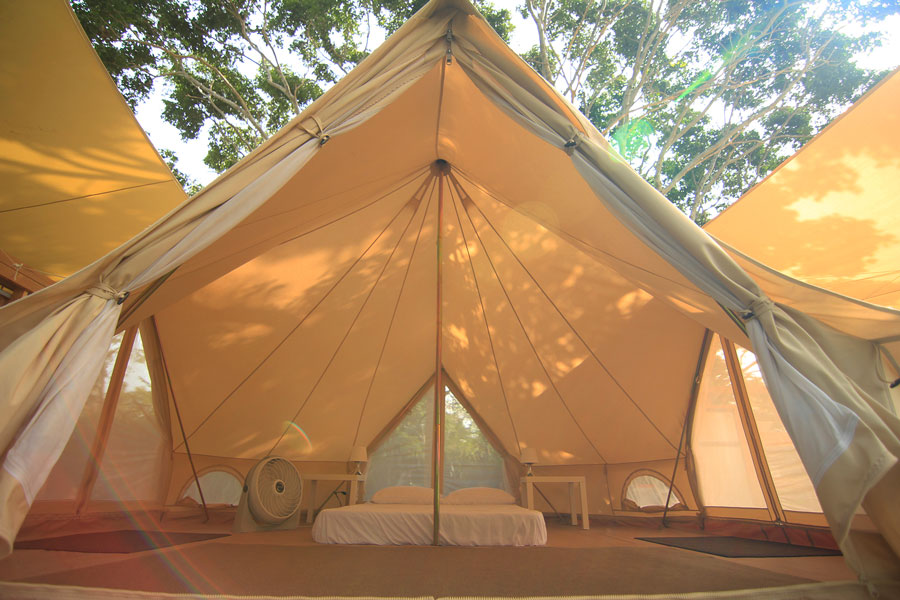
At Pitahaya Glamping Retreat you can spend the days exploring the campground and surrounding countryside.
Boqueron Beach curves in a graceful white arc lined by towering palms and sea graphs and thegentlest sea you can imagine, the water warm and salty to touch and gin-clear to the bottom. This is an official balneario, or public beach, so there is ample parking, dressing, shower and restroom facilities as well picnic areas and a cafeteria. This makes it an excellent stop for families.
The beach is just adjacent to the village of Boquerón, with a great after-beach scene because of its bevy of waterfront restaurants and bars. Have a cold drink and conch or Caribbean lobster fritter at the iconic El Schamar bar an drink in the scene. You can watch the sunset over the wooden dock behind the restaurant, one of the prettiest views in all of Puerto Rico, or continue shooting pool inside as the illuminating orange disk descends outside the wide open windows.
On weekends and holidays, there’s often live music performed at two different squares here, so it’s possible that you may find at some point on a Saturday line dancing in a crowd to bomba and plena music; nothing to worry about, just go with the flow.
When it’s time to eat, however, head direct to Downtown by Chef Jose Carles, just off the beaten path of the downtown area near the yacht club and marina. Carles ran the kitchen for years at the glamorous Royal Isabela resort on the northwest coast as well on South Carolina’s Kiawah Island before deciding on returning home to do his own thing at downtown. You’ll be glad he did. A fisherman himself, Carles’ constantly evolving menu plays off the freshest fish brought to the table that day, as well as the locally-sources herbs and produce gathered from the surrounding Cabo Rojo countryside.
Carles is a master of converting Puerto Rico’s traditional dining experiences into high art, and he can bring the simplest of delicacies to new heights. Fried fish and cheese fritters are served with tomato jelly and fragrant avocado dip, while the traditional black morcilla sausage is paired with steamed Chinese bao buns.
The chef also draws inspiration from creating gourmet delights from food most people would never consider eating, such as the invasive lionfish and the tiny ceti fish, which is more often used for bait than dinner. Try such an adventure while here; you won’t be disappointed. The red snapper and mofongo is among the best in town, but there are nightly surprises on offer here, like sautéed prawns over saffron risotto, a paella that changes with the seasons, succulent Cuban style beef canoe and sautéed octopus in black bean puree. It’s no wonder Downtown has a growing number of steady customers, and you’ll be thinking about your return even before you finish the meal. You can dine outside beneath leafy branches of enormous shade tree while watching the crowd strolling along the bayside promenade or chill out in the inside dining room.
Don’t leave Boqueron without checking in to World Cup Kitchen Bar, a sports bar that serves up gourmet cuisine and 80s hits and has the friendliest staff on the west coast. There’s a lot going on here, and the unique experience won’t disappoint. World Cup specialties include baked eggplant or sweet plantain piñon stuffed with either mahi mahi, salmon, steak, chicken or vegetables and topped with a creamy velouté, garlic or lemon sauce. There are also fine risotto, succulent grilled steaks and fresh seafood specials.
This is a sports bar, however, and the pub fare here is also a few steps above what you expect. The house burger literally towers from your plate, and the homemade cheese make the nachos something special. Everyone is friendly here, and you are likely to meet the husband and wife owners, who place a premium on welcoming service, and the young chef, who shows up every night to dazzle the clientele. The crowd is just as friendly, and this a favorite spot to stop for boaters and cyclists.
Boqueron has a number of fine traditional seafood restaurants, and the waterfront Galloways has among the choicest locations, with its back deck literally on the water looking west, the perfect spot to spy schools of fish on the dazzling sunset. They specialize is seafood and Puerto Rican cuisine but have ample U.S. style offerings. Try Pika Pika if you feel like some tasty authentic Mexican food at reasonable prices, and 101 West, on the drive out of town towards Lajas, is another fine option with fresh fish, smoked ribs and California cuisine offerings and craft cocktails. There is an attractive indoor dining room and bar, and back terrace that provides a taste of the Puerto Rican countryside.
Boqueron is another appealing spot to base yourself while exploring the southwest, and the Boho Beach Club, which was reborn in the aftermath of Hurricane Maria, is among the best bets in town, with a stylish lobby, restaurant and guestrooms, and an enthusiastic and knowledgeable young staff, who treat guests like friends and family. The pool and lounge area is among the best in Cabo Rojo, and the lobby restaurant is always busy, serving cutting edge cuisine from brunch through dinner and offering an impressive wine display and bar pumping out craft cocktails and tall tropical drinks. It’s a few blocks from the downtown area, which guarantees you some quiet on holiday weekends, and close to the entrance of the public beach. Another favorite spot to stay in town is Parador Boquemar, down by the village waterfront, offering guests a full-service restaurant and pool area.
Golfing enthusiasts can check out the Club Deportivo Del Oeste country club and marina, which features an 18-hole, Jack Bender designed championship golf course that has hilly terrain with spectacular views. Open to the public, the club also offers tennis, gym and other activities for the family with on site and nearby restaurants.
When you are ready to take a break from the sun, consider a stop at the Schoenstatt Sanctuary, a tiny beautiful Catholic church located between Combate and Boqueron on gorgeous, tranquil grounds that feel like a piece of Europe in Puerto Rico. The small church, which features a carved wood altar and stained glass windows, is located on a hilltop and offers views to the ocean and a sea breeze. The ground have a fountain, meditative gardens and a mosaic stations of the cross. Visitors are welcome daily.
Another option is the charming public plaza at the historic center of Cabo Rojo, a charming spot where men play dominos in the shade and laughing children dart around the colorful Puerto Rican candy stand. There are a number of historic buildings here, including the neoclassic San Miguel Arcangel Cathedral that was built in 1783, and a monument to Ramon Emeterio Betances, a medical student and beloved patriot who led the fight to abolish slavery in Puerto Rico. The plaza also features one of the first obelisks to be constructed in the Caribbean, with the monument dedicated to the founders of Cabo Rojo, with an adjacent Museum of the Patriots. Another attraction is a monument to hometown son Salvador Brau Monument, a poet, historian, sociologist and journalist who published the groundbreaking book “The History of Puerto Rico” in 1904.
Cabo Rojo’s tourism office runs a monthly guided tour of the historic sites called Cabo Rojo Nocturno, which culminates with a performance by the official municipal band playing Puerto Rican classics.
Make the most of a rainy day
Turn a grey day into a bright one with five entertaining activities to brighten your day
Turn a grey day into a bright one with five entertaining activities to brighten your day
It’s raining, it’s pouring, and your day feels so boring. Luckily for you, Puerto Rico has plenty of fun indoor activities as it does outside.
Yes, this exquisite Isle of Enchantment is well known for his amazing pristine beaches, azure waters and ongoing stretches of golden sand but Puerto Rico has so much more to offer.And when the weather is grim, here are five enjoyable activities that BIENVENIDOS recommends to brighten your day.
Stroll around a first-class museum
Take advantage of a rainy day by visiting one of Puerto Rico’s stellar museums to take in incredible world-class exhibits.
Straddling the border between San Juan’s Condado tourism district and its cultural heart of Santurce is the Puerto Rico Art Museum, a glistening showcase of Puerto Rican culture.
Stroll around at your leisure or take advantage of the guided tours that are available to help visitors take in a stunning array of works in its permanent collection, which includes an exhibition representative of Puerto Rican art from the 17th century to the present, as well as world-class temporary exhibitions. The setting is calm, cool, and cutting-edge.
This museum is accredited by the American Alliance of Museums and an affiliate of the Smithsonian Institution facility. Its 130,000 square feet of space includes 24 exhibition galleries, a theater, workshops, an interactive area for children, and a research area, among others. An upscale restaurant and eclectic gift shop round out the experience.
Also sitting in the heart of Santurce is the Contemporary Art Museum located a short stroll up the road in a former public school built in 1918. The Georgian-style building has been on the National Register of Historic Places since the late 1980s and was renovated under the direction of Puerto Rican architect Otto Reyes Casanova for its new role as home to the island’s top collection of contemporary art.
The permanent collection at the two-story museum in the Stop 18 area includes important works by Puerto Rican, Caribbean and Latin American artists produced from the second half of the 20th century to present. The galleries, which surround a stunning interior courtyard, exhibit a wide variety of works ranging from paintings and sculpture to mixed-media, sound, and video installations.
Knowledgeable and friendly staff is on hand to guide you through a collection that reveals the mixture of influences, cultures, and history behind the contemporary art movement in Puerto Rico since World War II. There is a small gift shop on the first floor.
Another great place in Puerto Rico’s southern region, referred to as Porta Caribe, is the Ponce Art Museum, a world-class institution that is recognized as an important center for European art in the Americas. Its stunning collection, the finest in the Caribbean, provides a rich panorama of western art stretching from the Renaissance to the present day.
The main building designed by Edward Durrel Stone, the architect behind the John F. Kennedy Center for the Performing Arts in Washington, D.C.; has a soaring sculpture by American pop artist Roy Lichtenstein, “Brushstrokes in Flight,” that gives way to a gleaming glass pavilion added to the original building.
The internationally renowned collection is comprised of more than 4,500 works of art from many cultures, dating from the ninth century C.E. to the present. The dynamic, wide-ranging works includes paintings, sculptures, prints, photographs, drawings, decorative arts, pre-Hispanic, and African objects, Puerto Rican folk art, contemporary ceramics, video, and sound art.
Of course, you can’t miss “Flaming June,” the famed 1895 painting by Frederic Lord Leighton that has been practically synonymous with the museum since its opening. The Museum is partially opened. For more information please send an email to: info@museoarteponce.org.
Retail therapy
A little rain never turns away a shopping enthusiast. On a wet day in Puerto Rico, though, places like the picturesque Puerto Rico Premium Outlets in Barceloneta, most commercial strip malls, and free-standing stores in Isla Verde, Condado and Old San Juan would be difficult to appreciate because they are located outdoors and are really meant for customers to enjoy the weather.
An all-time favorite indoor mall among visitors and locals alike is Plaza las Americas, the largest in the Caribbean that literally has more clothes stores under one roof than any other place in Puerto Rico. It offers the widest variety of shopping and dining experience with over 300 stores including the only Macy’s in the Caribbean and the largest JC Penney (it has three floors). You can also find popular stores like Abercrombie and Fitch, Michael Kors, Forever 21, Banana Republic, BCBG, Old Navy, West Elm, among many others.In addition, the mall also has a Caribbean Cinemas theater and more than 40 dining alternatives at its food court with ample parking and valet service.
When visiting the east coast of Puerto Rico, you will discover two remarkable malls on your way, Plaza Carolina and The Outlet at Route 66, which is located in the town of Canovanas and named after the road that takes you there.
Over at The Outlet at Route 66 you will see stores like Nautica, Perry Ellis, Polo Ralph Lauren, Calvin Klein, Van Heusen, Kenneth Cole Outlet, BCBG Maxazria, Tommy Hilfiger, Guess, and many more. This remarkable outlet has a food court where you can enjoy a great lunch or dinner alone or with your travel companions. Its spacious and beautiful architectural design features glass ceilings at its food court and a refreshing fountain that makes it an ideal spot to recharge your energy to continue your sightseer venture.
With a contemporary architectural style inspired by Isla Verde’s “beachy” atmosphere, visitors love the tropical feel at Plaza Carolina shopping mall.
It first opened its doors in 1978 in the town of Carolina, becoming the first regional commercial center in the northeast and the second largest mall on the island. Plaza Carolina has more 250 stores and restaurants. Only 15 minutes away from Luis Muñoz Marin Airport and from Isla Verde’s main hotels, Plaza Carolina is a perfect stopover to get the most out of your Caribbean vacation without fighting with your umbrella.
In the south, Plaza del Caribe is your best bet. It’s the largest mall in this region with a total of 130 stores including Forever 21, Zara, American Eagle Outfitters and Old Navy, among others. Additionally, it has a Caribbean Cinemas theater.
Heading west you’ll find the third largest shopping center in Puerto Rico, the Mayaguez Mall, which is home to stores like Sears, JC Penney, Wal-Mart, Marshalls as well as Clarks, Gordon’s, Sony Style, Totto, among plenty of others. Besides featuring a supermarket, it has Chili’s and Romano’s Macaroni Grill restaurants, just to mention a few. Mayaguez Mall is one of the most important shopping centers in the area since its opening in 1972 and it’s a place where visitors stop to assess what the west has to offer in a family environment.
On a budget or simply enjoy to hunt for bargains, then there are many U.S. style indoor malls island-wide.
Last but certainly not least, The Mall of San Juan is bursting with luxury shopping. It features an exclusive mix of fashion and lifestyle merchants, such as Versace, Gucci, Louis Vuitton, Oil & Vinegar, Jimmy Choo, Kate Spade New York, Salvatore Ferragamo, among others.
All sunshine on spa day
Nothing beats a spa session, or a really good massage. Most major hotels and resorts in Puerto Rico have a full range of top-notch spa facilities. So here are some of the best hotel spas you can enjoy on a less-than-sunny day.
Achieve a blissful state of relaxation at Spa Botanico at the Dorado Beach, A Ritz-Carlton Reserve, situated on the former Laurance S. Rockefeller estate, inspired by nature for a holistic sense of wellbeing. Indulge yourself with treatments and massages prepared just for you and experience heightened levels of pampering at this amazing sanctuary. Spa Botanico’s most luxurious treatment on its menu is The Botanico Beauty Ritual, which offers a full day of treatments including a Vitamin C exfoliation combined with an Ebb & Flow massage. Then you’re treated to a facial using a non-surgical face lift micro-current machine and a hair and scalp treatment. After eating a spa lunch, you receive a manicure and pedicure, followed by a hair wash and blow dry and custom make-up session.
The incredibly intimate spa at The St. Regis Bahia Beach Resort in Rio Grande embraces the history and the lush surroundings El Yunque Rainforest. The seven treatment rooms are a dreamy escape: small casitas (little houses) in a jungle courtyard centered by a koi pond. With private terraces and water, you’ll bask in the afterglow of treatments like The Cemi Gods Rejuvenating Facial and Cacique’s Brightening Facial, which celebrate the African, Taino and Spanish heritage that make up today’s vibrant Puerto Rican culture.
Indulge yourself at Zen Spa Océano at the Caribe Hilton, with 12,000 square feet and top flight service for the leisurely traveler and the on-the-go executive. Their treatments, like the hotel itself, are tropical chic, incorporating such natural aromatic ingredients as honey, cucumber, sea salts, seaweed or mud to revitalize and relax stressed guests who deserve special attention and top-flight service. The full-service gym is handy and inspirational; the floor to ceiling glass windows with a panoramic ocean view keep spirits high on the treadmill.
Rio Mar Beach Resort, A Wyndham Grand Resort’s Mandara Spa in Rio Grande also draws inspiration from the rainforest, as well as the ancient Sanskrit legend about the gods’ quest to find the elixir of immortality and eternal youth that gives it its name. Eastern and Western traditions combine with Balinese décor and tropical ingredients like coconut and frangipani for a sensual Caribbean experience like no other.
On the rum trail
You might not know it, but Puerto Rico is one of the biggest and best rum-producing nations in the world.So why not warm up your rainy day by visiting the Casa Bacardi Visitor Center in Cataño and take a rum tasting tour. Learn about the past, present, and future of Bacardi, one of the world’s most popular rum brands.
Inside the giant iron gates embellished with its distinctive fruit bat logo lies the 127-acre Bacardi distillery that resembles an exclusive country club, where over 250,000 tourists flock each year making it the second most-visited tourist attraction in Puerto Rico. The lush manicured lawns and tropical palms decorated with modern art sculptures provide the perfect backdrop for the tropical art deco building.
Founded in 1862 by Cuban immigrant Don Facundo Bacardi Mass, the Bacardi factory is one of the largest factories in the world for production of rum, making over 100,000 liters a day. His first distillery in Cuba opened in 1862 and as Bacardi grew more successful, more factories were opened in Mexico and Puerto Rico. But the 1960’s saw the Bacardi family leave Cuba for good, taking their distillery in Puerto Rico to a whole new level.
At Casa Bacardi Visitor Center, guests are taken on a historical interactive journey about the brand and taught characteristics of the family. The tour includes a short film, some secrets of the distillation process, a pit stop to the museum featuring examples of the first Bacardi bottles, family memorabilia, and there is even a section to smell the types of rum. Most importantly there is a rum cocktail demonstration, and you can even sample some of the historic rums.
Sizzling hot casinos
Cabin fever can set in fast, especially when you feel trapped inside your hotel room due to rain. Just because it’s pouring outside doesn’t mean you can’t find some sizzling entertainment by stopping in at one of Puerto Rico’s sultry hot casinos with cutting-edge games.
Slot machines are the most popular games at most of the island’s casinos. You can find them ranging from penny slots all the way up to $25 slots. A few still take coins, though most of the casinos have changed to plastic magnetic strip card or paper bar-coded cards tied to a debit card.
Some casinos still have some of the older machines, where you can still get that special thrill of pulling down on that lever on the side of the machine (or push a button) and watch the reels spin with all its magical bells and whistles and hear the clank of coins hitting the payout tray.
The choice in game tables is a little more limited. Not all places will have your game of choice. Roulette and blackjack are pretty easy to find. It is best to call ahead if you have your heart set on a certain game.
So even if you get no thrill out of placing bets, a trip to the casino offers rewards if you like the finer things in life. And they offer all the entertainment of a night on the town. And like the best that Puerto Rico has to offer, casinos have that perfect mix of friendly locals and eclectic visitors from around the world.
Live music is a constant in island casinos, from versatile two-man combos to crooning divas backed up by jazz piano to full blown salsa bands on weekend nights. There are also more traditional “big bands” performing classic Spanish songs and ballads that perform right outside casinos on weekends.
Most of the island’s casinos are found in San Juan hotels and resorts, though you can also find thrilling gaming facilities in the towns of Bayamon, Caguas, Manati, Mayaguez, Ponce and Rio Grande.
And don’t worry. The sun will (probably) come out tomorrow.
Here’s what’s cooking at Loiza Street
When you’re in San Juan, make sure to visit Loiza Street, the city’s newest hip hangout.
When you’re in San Juan, make sure to visit Loiza Street, the city’s newest hip hangout.
If there is a secret to the city’s enduring appeal, it’s probably that it mixes thrilling metropolis entertainment, cultural and culinary delights with the laid back cool of a beach town. Nowhere is this delightful dichotomy in fuller view than on Loiza Street — a mélange of boutiques, restaurants and bars that stretches out for about a mile, one to two blocks away from some of the sweetest stretches of beach in Condado and Ocean Park, between the two Indio and Barbosa seaside parks.
Loiza Street is home to some of the best new restaurants to open in recent years, with talented young chefs reinvigorating island cuisine with a renewed passion, and a wide diversity of authentic cuisine taking root here: Mexican, Greek, Chinese, Peruvian, Japanese, Italian and fresh seafood. It’s also home to pubs and low-key clubs with live music and other entertainment, as well as fashion boutiques and artisan smoke and jewelry shops.
The Loiza strip runs from De Diego street to the west, home to Supermax De Diego, probably one of the best supermarkets in San Juan, and the Double Tree by Hilton San Juan, to just before Barbosa Park to the east, home to Nomad Urban Beach Hostel, one of two hostels catering to young urban travelers on the block (the other being Conturce Hostel). The low-cost, high quality hostels appeal to the same youthful crowds that are driving the street’s popularity. They offer lodging options from rooftop hammocks to coed and same sex rooms with multiple beds to private rooms with an ocean view and private bathroom. The Double Tree has golf-cart shuttle service for guests to the beach at Parque del Indio and room service, lounge chairs, and beach umbrellas once there. The bistros, bars and boutiques that line Loiza Street are also in easy reach of hotels in Condado and Ocean Park, including the San Juan Marriott Resort & Stellaris Casino, the Numero Uno Beach Hotel, At Wind Chimes Boutique Hotel and Acacia Boutique Hotel.
The area has become one of the city’s hottest night spots, with a number of new bars specializing in cutting edge cocktails and craft beer. Piso Viejo is an old school cocktail emporium in a beautiful room that offers the best of classic Puerto Rico style. There’s a short menu fashioned from local cuisine and a gorgeous dance floor that is one of the best spots in the city to sashay to salsa.
There’s usually some serious booty shaking going on at El Barrio Socialbar, which draws a youthful crowd with loud reggaeton and local urban dance music. The cavernous space has the biggest bar on the block, an always fun crowd and the hardest working bar and service staff in the business. This is the place to, with drink in hand; shake it to the latest hits. Calle Loiza is also home to the popular club, Rumors, which has live entertainment, dance music and bistro fare.
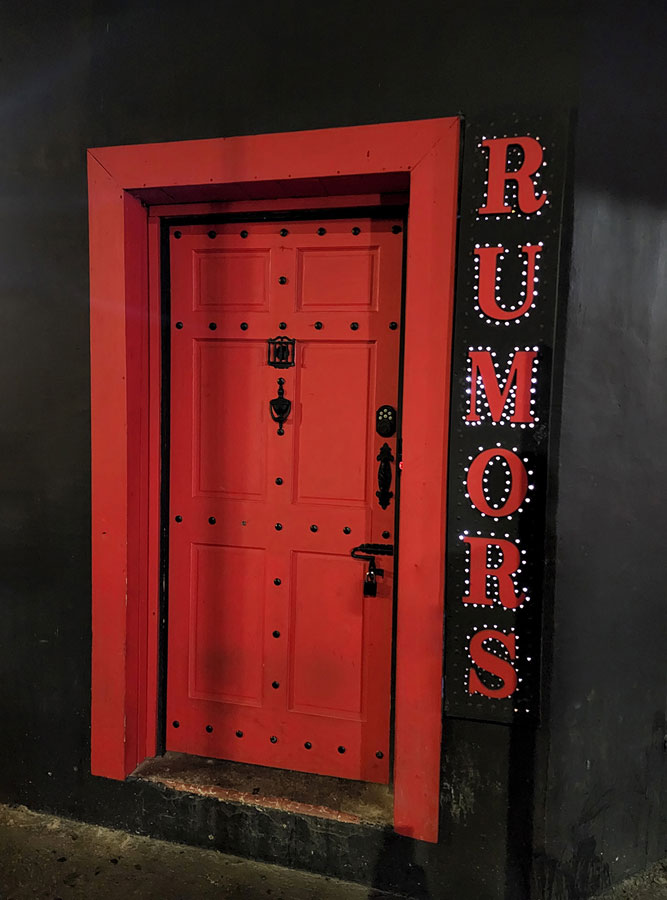
Rumors has live entertainment, dance music and bistro fare.
El Bar Bero, a hipster cocktail lounge housed in a transformed barber shop, features friendly bartenders and complex, hand-crafted libations within a cool, modern, low-lit interior space.
If you had to name a place that best captures the Calle Loiza spirit, it would undoubtedly be Cafe Tresbe and the other eateries on its site, a modern open-air combination of food stands stitched together repurposed shipping containers and wood and metal terraces lined with blooming tropical flowers that is as attractive as it is utilitarian. Known for its burger sliders, seafood turnovers, fish tacos and kebabs, this is a great spot to have a snack and drink in the delicious atmosphere of Calle Loiza. The spot also offers fresh tropical fruit frappes, sushi and poke and is a great place for a drink from morning till after the sun goes down.
Tresbe was one of the first wave of restaurants and bars to open on the block, transforming the area into a vibrant San Juan hotspot from what was once an ugly strip of dingy restaurants and retail shops in decline. The opening of Sabrina Brunch & Bistro Bar here, however, put Calle Loiza on the culinary map, with chef Juan Camacho’s relaxed and soulful versions of Cuban and Puerto Rico classics, as well as tropical versions of world cuisine staples, among San Juan’s most unheralded culinary wonders. The attractive yet laid back space also features occasional live music and always friendly and knowledgeable service. Camacho, and the Sabrina management team, is also behind Azucena, the charming restaurant that more recently opened across the street in a Puerto Rico country home -style spot. Here the focus is more squarely on Puerto Rico cuisine and the entrees more focused to fine dining than bistro fare but the result is just as successful With Camacho in the kitchen, Sabrina and Azucena are two of the finest restaurants in San Juan, not just on Calle Loiza.
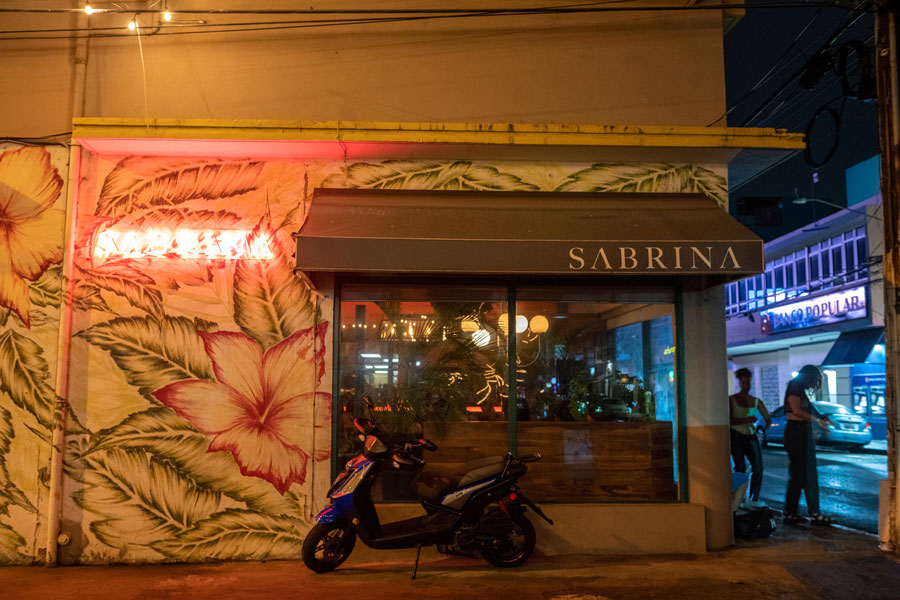
Sabrina Brunch & Bistro Bar put Calle Loiza on the culinary map.
Bottega, located in the heart of the area, has been one of the city’s “in” spots since opening in 2019. It pairs an extensive wine list and tapas menu with both Spanish classics and modern renditions. It’s a great big room with high ceilings and wall-sized windows, large comfortable tables and chairs and a wrap-around bar that is the spot to mingle. The staff knows their wine and food and is as welcoming as they are knowledgeable.
Everybody goes to Bebo’s Cafe for the tasty and large platters of comida criolla at economic prices that makes it a rave for locals as well as travelers. Bebo’s, near the west end of the area, is just one of several comida criolla emporiums offering up price and taste on Calle Loiza, and you’ll find the same fresh local flavors and friendly vibes at Ana’s Cafe and Cafeteria Quisqueya, which are both closer to the eastern end. Gorge on mofongo relleno, grilled chicken criolla, tender island beefsteak and fresh seafood specials, usually fried red snapper or codfish serenata. All these spots have daily specials feature classic Puerto Rican plates at even better prices than the regular menu. Start off with fried cheese or a combination of turnovers. They also serve fresh fruit frappes and standard American breakfast and sandwich items, as well as wonderful local deserts – tropical flans, tres leches and cheesecakes. Molini’s also offers affordable tasty meals built on island flavors.
Calle Loiza also an ever broadening array of restaurants offering distinct world cuisines. One of its most established restaurants is Pan-Asian emporium Silk, on the grounds of the Gallery Plaza Double Tree by Hilton complex, which offers Chinese, Japanese, Mongolian and Vietnamese cuisine and sushi with flavor as big as its cavernous interior dining room and bar. This spot’s SoHo vibe is as authentic as the Chinatown special menu. There are kicking versions of the classics (Kong Pao chicken, Mongolian beef and, not to mention the steamed and fried dumplings and sesame noodles), a slick sushi bar offering Golden Dragon and Rock Rolls and tempura and teriyaki delights. Finish it off with fried ice cream.
Theos Greek Cafe is another long-term resident on Calle Loiza that offers authentic and inventive Greek cuisine served within a beautiful room that bows to Mediterranean classic design. The flavorful meals are as satisfying and refreshing as the ambiance.
Calle Loiza also has two fine authentic Italian trattorias – Mangiare Italian Trattoria & Pizzeria and Bocca Osteria Romana, that are top shelf and comparable to the finest such spots along the U.S. Eastern Seaboard. While pizza and pasta are the main stays, there are fabulous daily specials at both spots from grilled rib eye with rosemary to sophisticated sautéed fish platters.
It’s always brunch at Tostado, the big beautiful hipster breakfast spot at the center of the block that serves wonderful coco pumpkin pancakes, eggs Benedict with pulled pork, vegetable omelets and tasty burgers made with Cabo Rojo, Puerto Rico raised beef.
Pinky’s, which has the best sandwiches and wraps in San Juan, has found a new home on Calle Loiza after bouncing around a number of different locales around Ocean Park and Condado for the last decade. The small spot with big flavor also has among the best breakfasts in town.
It’s no secret that Calle Loiza’s restaurant scene is certainly keeping pace and evolving.
Divine churches where saying ‘I Do’ feels like a dream
Couples say “I Do” in all sorts of places: By the sea, on a boat, in the sky. That’s not to say the traditional church wedding is out. Far from it.
Couples say “I Do” in all sorts of places: By the sea, on a boat, in the sky. That’s not to say the traditional church wedding is out. Far from it.
Puerto Rico is fortunate to have some astonishing churches to get married in. Whether in metropolitan San Juan or out on the island, these iconic temples are part of the island’s rich architectural patrimony. To be married in one of them, as many couples from the island and mainland states choose to do every year, is to confer a sense of solemnity to a special day universally regarded as a milestone event in the life of a person. Plus, let’s not forget that walking down the aisle as a newlywed couple to the strains of Mendelssohn’s famous wedding march has got to be a pretty awesome thrill. Even if it’s canned music!
A favorite wedding venue, the Cathedral of Saint John the Baptist in Old San Juan is the second oldest church in the Western hemisphere and the oldest on U.S. soil. Last year it celebrated its 500th anniversary.
From its vantage location in the heart of San Juan’s historic quarter, the cathedral overlooks San Juan Bay. Its neoclassical facade belies an elegant interior with lovely stained-glass windows, bronze chandeliers, and extensive trompe l’oeil decorations, including a spectacular colonnade portico painted around the soaring dome ceiling above the altar.
When first built in 1521 the church was a simple structure with wooden walls and a thatch roof. Work on the permanent structure began in 1540 and continued for centuries; the current facade dates to the 1800s.
The church has a rich history. In 1598 the British navy turned up in the old city and looted the temple, absconding with all its valuable objects. In 1615, it lost its roof to a hurricane. Ponce de Leon, Puerto Rico’s first governor, is buried in a marble tomb close to the church transept.
Also in Old San Juan is the San Jose Church, the second oldest in the Americas established in 1532 under Spanish rule. The church is one of the earliest surviving examples of 16th century Spanish Gothic architecture in the Western hemisphere.
It was the resting place of Ponce de Leon for 350 years (1532-1735) and later his remains were transferred to the Cathedral of Saint John the Baptist. It still bears his coat of arms. San Jose Church remains as the final resting place of Jose Campeche, one of Puerto Rico’s most revered artists.
San German is a charming town on the island’s west coast. There you will find the Church of San German Auxerre, one of the oldest churches in the Western hemisphere.
It too has a venerable history. Spanish settlers founded the parish in 1510 but the permanent structure of the church dates to 1688. It has been refurbished several times due to earthquake damage in the 18th and 19th century, with the bell tower rebuilt in 1920.
San German de Auxerre has an impressive facade overlooking the main town plaza but what is truly breathtaking is the interior with its soaring vaulted ceiling decorated in an exquisite trompe l’oeil design imitating wood coffers. The pattern is repeated throughout the entire length of the ceiling with more trompe l’oeil flourishes along the arches. A stunning chandelier shines over the nave with additional chandeliers along the sides. The church is listed in the U.S. National Register of Historic Places since 1984.
One of the most charming temples in Puerto Rico and a popular choice for weddings is Saint Spyridon Church in Trujillo Alto. It was built in the 1930s by missionaries from the Mexico Archdiocese of the Greek Orthodox Church. They chose the most unlikely of places for the building: a former leper colony established in 1876.
Exquisite in its simplicity, Saint Spyridon is a sweet, intimate chapel painted in the white and blue colors of the Greek flag. A rapprochement between the Catholic and the Orthodox Churches makes it possible for Catholics to marry in this church.
And then there is the much beloved Stella Maris Church in Condado, San Juan’s tourist sector. It used to be a small, modest structure but a renovation led by architect Federico Montilla, his last project before retiring, has transformed it into one of the most exciting buildings in San Juan.
Montilla designed the new church in a mission style that is at once perfectly grand and contemporary. Among its outstanding features are the dramatic sloping roof of red brick shingles and two towers, the belfry in front and a larger tower in back topped by a cupola with rounded windows around it. One enters the church through a majestic, 10-foot-high black iron gate topped by a stunning, round stained-glass panel with a flower design. The flower motif is repeated on the facade in 12 narrow stained-glass windows, the work of local artist Edward Ferraioli.
Inside, a stunning see-through chapel is visible on one side of the entrance. The interior of the church is airy and minimalistic with a few grand touches: the gigantic sculpture of Christ on the Cross hovering over the altar and the stained-glass windows along the nave which soften the golden glow streaming into the temple.
Given the popularity of these churches, couples contemplating a wedding should make sure to reserve the church well ahead of the blissful day. Some churches require reservations six to eight months of advance. Couples who live in the U.S. can make all the arrangements through their local parish.
Puerto Rico is the Caribbean’s hottest spot for five-star weddings
Memorable moments go hand in hand with unforgettable locations and if that special occasion is a wedding, then it is no surprise that so many love birds choose Puerto Rico to celebrate their union.
Memorable moments go hand in hand with unforgettable locations and if that special occasion is a wedding, then it is no surprise that so many love birds choose Puerto Rico to celebrate their union.
What could be more romantic than to wed the love of your life on a sexy tropical beach as the sun is setting and the sky is ablaze with color or to say “I do” on a breathtaking marble terrace overlooking the blue hues of the ocean while the waves rhythmically lap the sand and scores of small votive candles flicker in the twilight.
The appeal of such magical weddings boosts the island’s popularity as the most perfect wedding destination. Besides, Puerto Rico is sunny and easily accessible by air from the mainland, making it ideal for a long weekend celebration. Plus, there are plenty of things to do — from sightseeing and sports to luxuriating on the beach — so your honeymoon can be as active or as languorous as you like.
There are all kinds of weddings but if you are dreaming of a luxurious event, then a very special setting is in order. Puerto Rico doesn’t disappoint when it comes to world-class venues that can deliver a stunning backdrop for a chic, five-star wedding, followed by a resplendent reception and dinner.
Among the more lavish locations, standouts include the Fairmont El San Juan Hotel, the Condado Vanderbilt, Dorado Beach, a Ritz Carlton Reserve; and the St. Regis Bahia Beach Resort; each offer what it takes for a truly unforgettable luxurious wedding and a totally romantic honeymoon.
But what exactly is a luxurious wedding?
“The word ‘luxury’ can be defined in many ways, but many believe luxury is a ‘feeling’ that couples feel, and not a tangible object that can be defined. It is the way they feel when they set foot on property, the reaction from their guests, the services they receive, and the dramatic scenic backdrops of their ceremony.
Poised flawlessly between city and shore, the Fairmont El San Juan Hotel has the quality of a movie set so a luxe wedding here will definitely make you and hubby feel like the stars of your very own love story. With its grand entrance, dramatic lobby showcasing one of the largest chandeliers in the world, and a verdant tropical garden canopied by a towering Banyan tree, this 388-guest room resort lives up to its fabled reputation as an iconic landmark. And having undergone a multi-million-dollar renovation taking on the Fairmont Hotels & Resorts brand, it has the updated and refreshed look of a chic socialite.
The Fairmont El San Juan hosts between 60 and 70 weddings yearly and about 40 percent of those weddings involve couples from outside Puerto Rico. Favorite spots for the wedding ceremony are the Banyan Tree, Aquarelle Restaurant, the Gold Ballroom and the International Ballroom. In most cases, the ceremony is followed by a reception and dinner in one of various indoor and outdoor venues, depending on the needs of the client.
The Fairmont El San Juan, with its long history and luxurious style, is definitely a good choice for a luxe celebration and, after the nuptials is over, for a very cozy honeymoon. This resort, after all, has it all so newlyweds don’t need to come out of their cocoon. There is the beach, the pool, a tri-level Well & Being fitness center that offers Pilates, vertical wall yoga, TRX, Cross Fit and group cycle. There is the legendary Chandelier bar, restaurants, a nightclub and several stores selling clothing, souvenirs, sweets and shoes. No getting bored here.
Couples who want a wedding in the city look to the Condado Vanderbilt, one of San Juan’s most famous icons, as the perfect venue for a classy event.
Opened in 1919, the Vanderbilt was designed by the same architectural firm that designed New York city’s Grand Central Terminal. It was Puerto Rico’s first luxury hotel and the first to have a casino when gaming was legalized in 1940.
Although it has experienced changes through the years, this historic hotel never lost that grand style one sees reflected in its imposing facade and the majestic double staircase in the lobby that leads to the first-floor ballroom. The hotel is commodious, with elegantly appointed public rooms and spectacular ocean views.
Weddings at the Vanderbilt are a year-round affair but the busiest months are April, May, November and December. The hotel can accommodate groups of between 25 and 500 people.
Luxurious weddings at the Vanderbilt are characterized by impeccable service. As examples of excellence are the synchronized dinners that Michelin starred Executive Chef Juan Jose Cuevas creates for wedding parties and the support given to couples by professionals who guide them every step of the way. The historic setting also contributes to the sense of luxury.
Off island couples usually arrive at the Vanderbilt two days before the wedding and stay two extra nights. On their wedding night, newlyweds receive a champagne bottle and chocolate covered-strawberries, compliments of the hotel. The honeymoon is a time to unwind and enjoy deluxe pampering. Like personalized facials and massages using plant oils and organic botanicals at the hotel’s exclusive The Spa. You can be totally at ease: Thanks to the hotel’s concierge service, a butler will take care of all those little details, like making reservations for restaurants and for entertainment activities.
Over in Dorado, it is easy to feel in the lap of luxury at the Dorado Beach or the St. Regis, two resorts that seem a world away from San Juan although they are but 30 minutes away from the capital city. Both combine the comfort of high end living with the soul -enriching experience of being in a natural setting of incomparable beauty.
Dorado Beach is based on a property once owned by famed aviator Clara Livingston and later developed as a resort by Laurence Rockefeller. Everywhere you turn, you are in the midst of a wildly lush world of green palms and plants (there are more than 300,000 varieties planted) with the sea as your north.
All 114 rooms, completely refurbished recently as part of an extensive hotel restoration, are beachfront so the ocean is forever in your sight. Water is the prevailing, sensual theme: all the rooms have soaking tubs and outdoor showers shaded by the surrounding foliage; some have spacious balconies while others have private plunge pools.
May and June are the busiest months for weddings at the Dorado Beach. Most couples prefer a ceremony on the Surf Lawn, overlooking the ocean, and a sunset cocktail hour outdoors. Wedding parties average 100 people.
The “I dos” and partying over, it’s time for the couple to savor their private time together. A honeymoon at Dorado Beach is nothing but idyllic. Wedding couples usually stay three to seven nights, precious time they can spend luxuriating in the sun and indulging the senses at the Spa Botanico, a truly special place built around a 90-year-old tree. Here you can get a tree house massage, facials and body scrubs with poultices from indigenous ingredients. For the romantics at heart, there are couple’s pavilions where they can steam and bathe in cloistered gardens.
And there’s plenty more to do like water sports, tennis, 11 miles of nature trails, all of which will build an appetite that couples can assuage at four different restaurant experiences, including a Culinary Center that hosts wine dinners and cooking classes showcasing seasonal ingredients and international cuisines.
St. Regis Bahia Beach Resort is described as a standard bearer for luxury in Puerto Rico and now the resort is more splendid than ever thanks to a recent $60 million renovation that has given its 139 rooms and public spaces a refined, new aesthetic.
Nestled along a curved, tranquil bay, the elegant St. Regis is beautifully integrated within its lush, tropical environment showcasing more than 110,000 native and naturalized plants.
The heart of the resort is the magnificent Casa Grande (Plantation House), check-in area and the setting for Paros, the fine-dining restaurant, and the St. Regis Bar. For more casual eating there is a poolside restaurant with indoor and outdoor seating.
A luxurious wedding at the St. Regis is all about the attention to detail, the anticipation of guests’ needs, and the personalization of every detail on the venue and offerings.
The resort welcomes intimate or large weddings of up to 250 guests; the months of April, May, June and July are busiest.
A honeymoon at St. Regis is to experience living in your own private paradise, one with all the comforts and amenities that luxury can provide. For couples, it is a time to relax, sunbathe, do water sports and enjoy the splendor of one of the most beautiful spots in Puerto Rico.

